July 15, 2018
Martha O'Kennon
It was brutally hot again though the night temperatures went down to a comfortably cool range. The heat had caused what they call a "bloom" in the pond algae, so that night-time animals could stroll in and try to get their food fix. What they mostly contributed was torn lily pads and a decidedly unattractive pond scene. I ended up buying a gallon each of bacteria (plus algae eaters) and barley straw extract (algae un-friend). Anyway, here are some of the midsummer flowers. You recognize a water lily, don't you? The second here is a blooming (just started) blue balloon flower, and last is a day lily given me when friends Don and Nancy moved away.
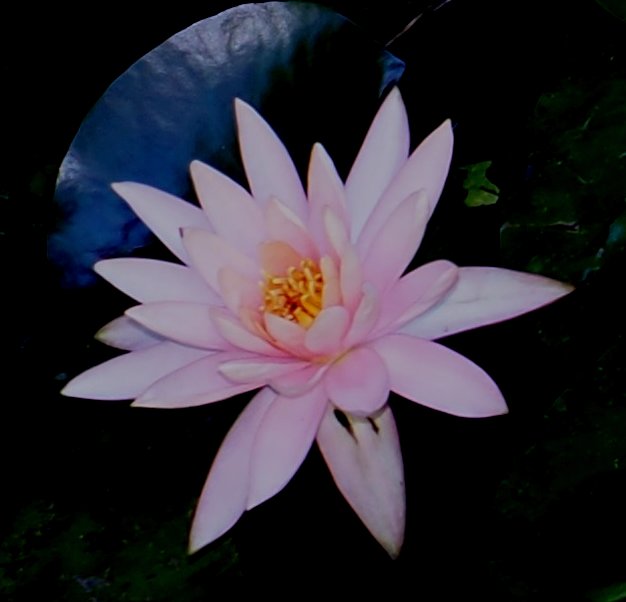
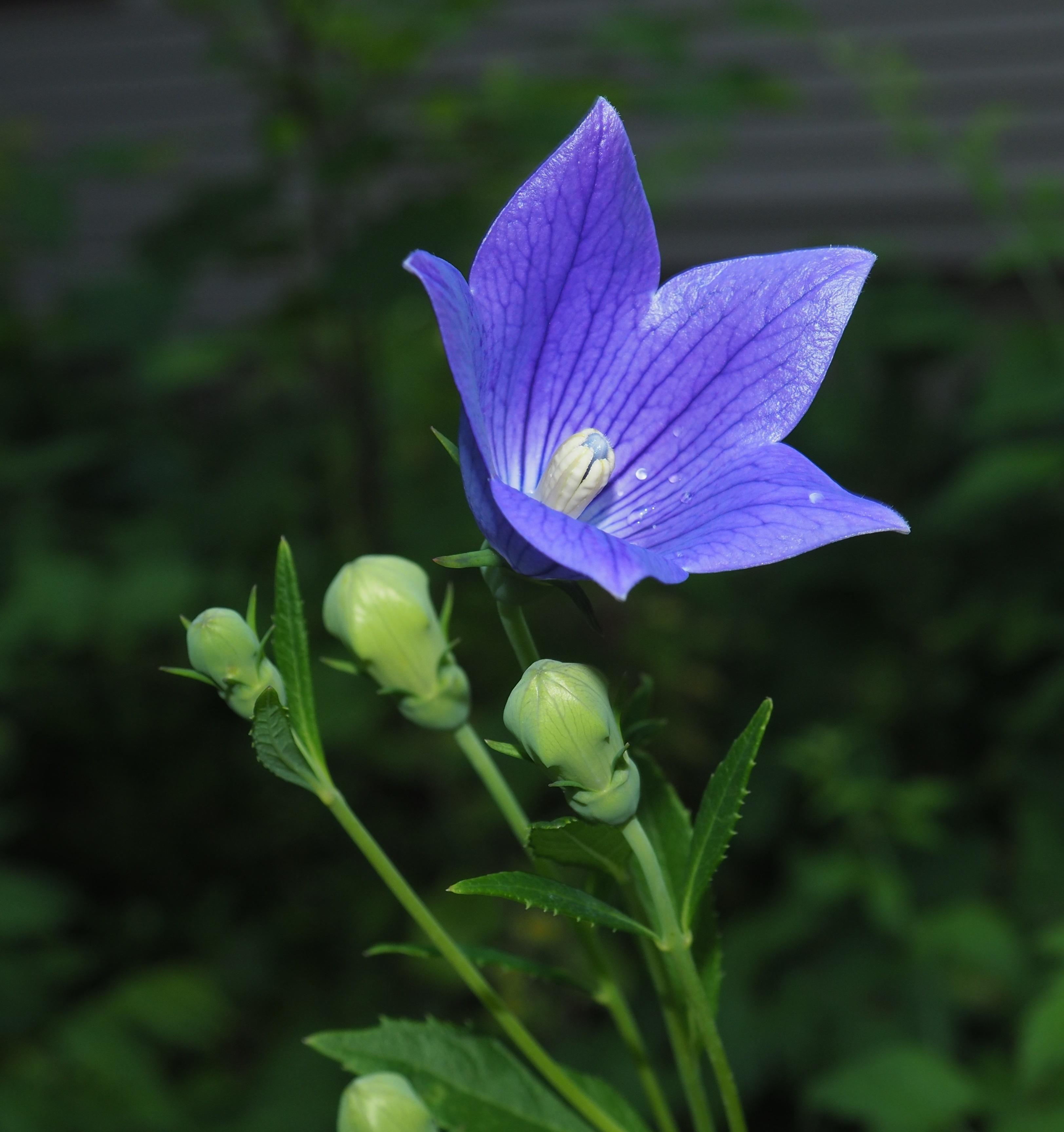

Remember that there is information in the name of the file for each image. You can see it by mousing over the image - look at the lower left of the screen. Or you can click on the image to get to the (usually) larger image. Then the info is displayed in the address line above. Sometimes the second click will actually display a different view of the original image.
After so many years of thinking we had ONLY one genus of ants here, it's hard to say which is which. Guess?
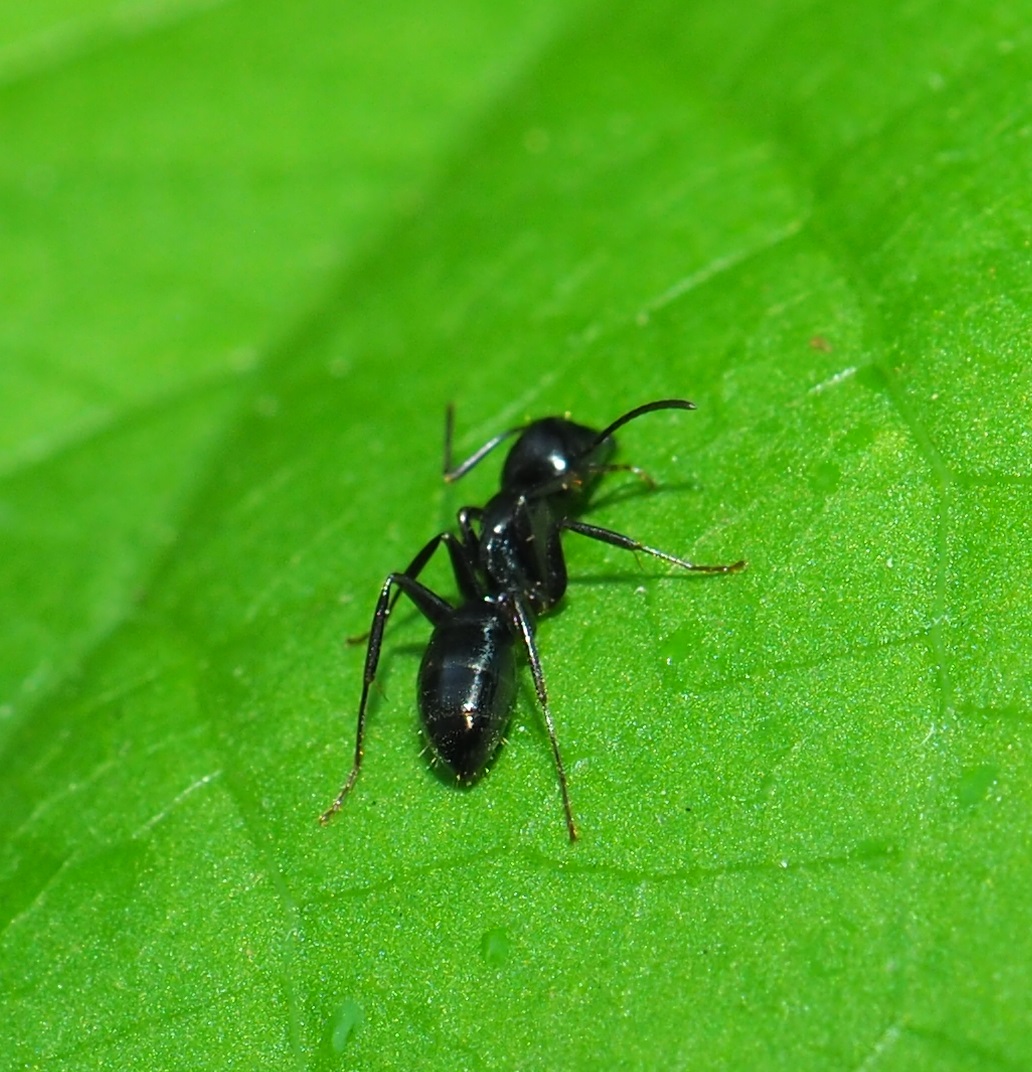
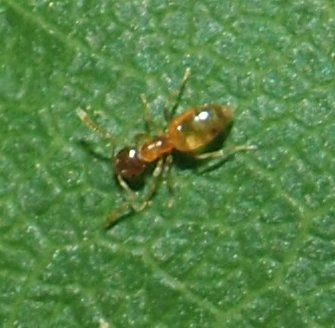
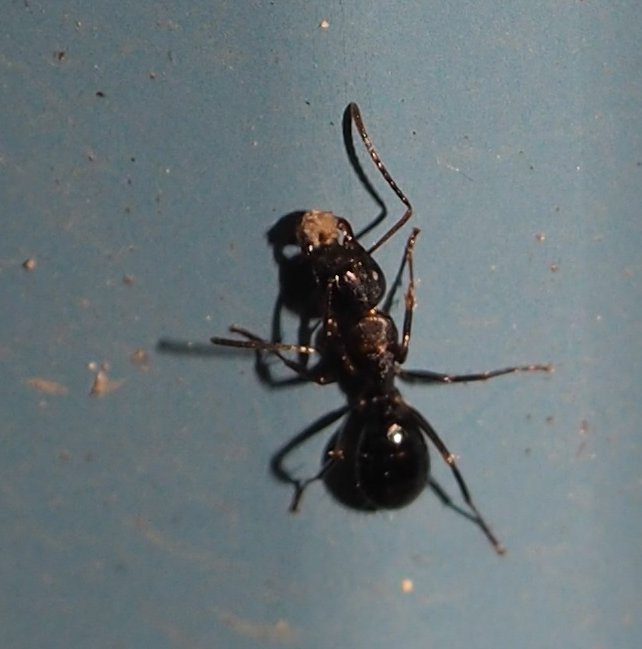
More barklouses! The raggedy-looking one is a scaly-winged barklouse (Echmepteryx hageni). The next is Metylophorus novaescotiae, now an adult and quite elegant. Third may be a barklouse OR an aphid OR a psyllid.
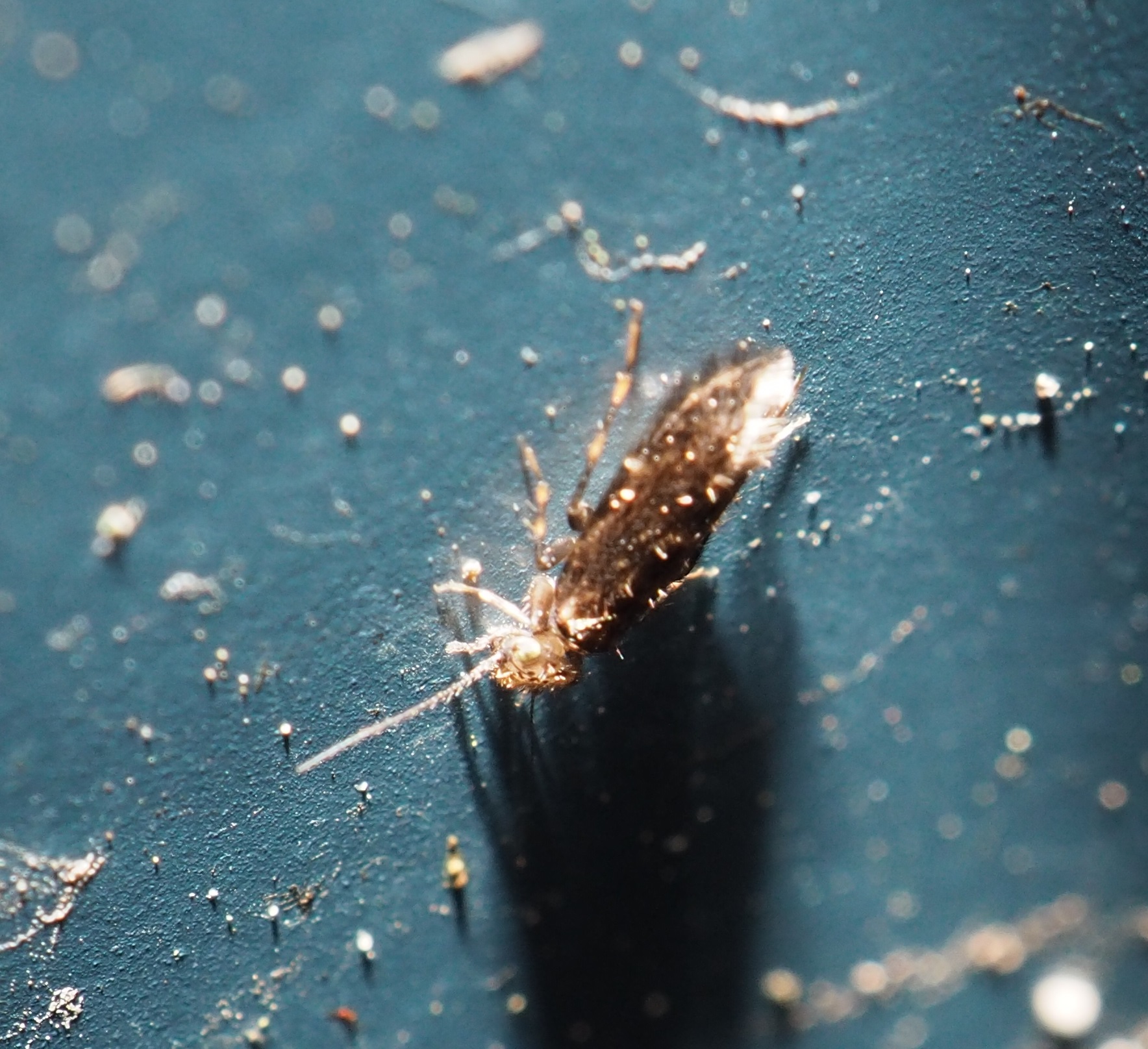
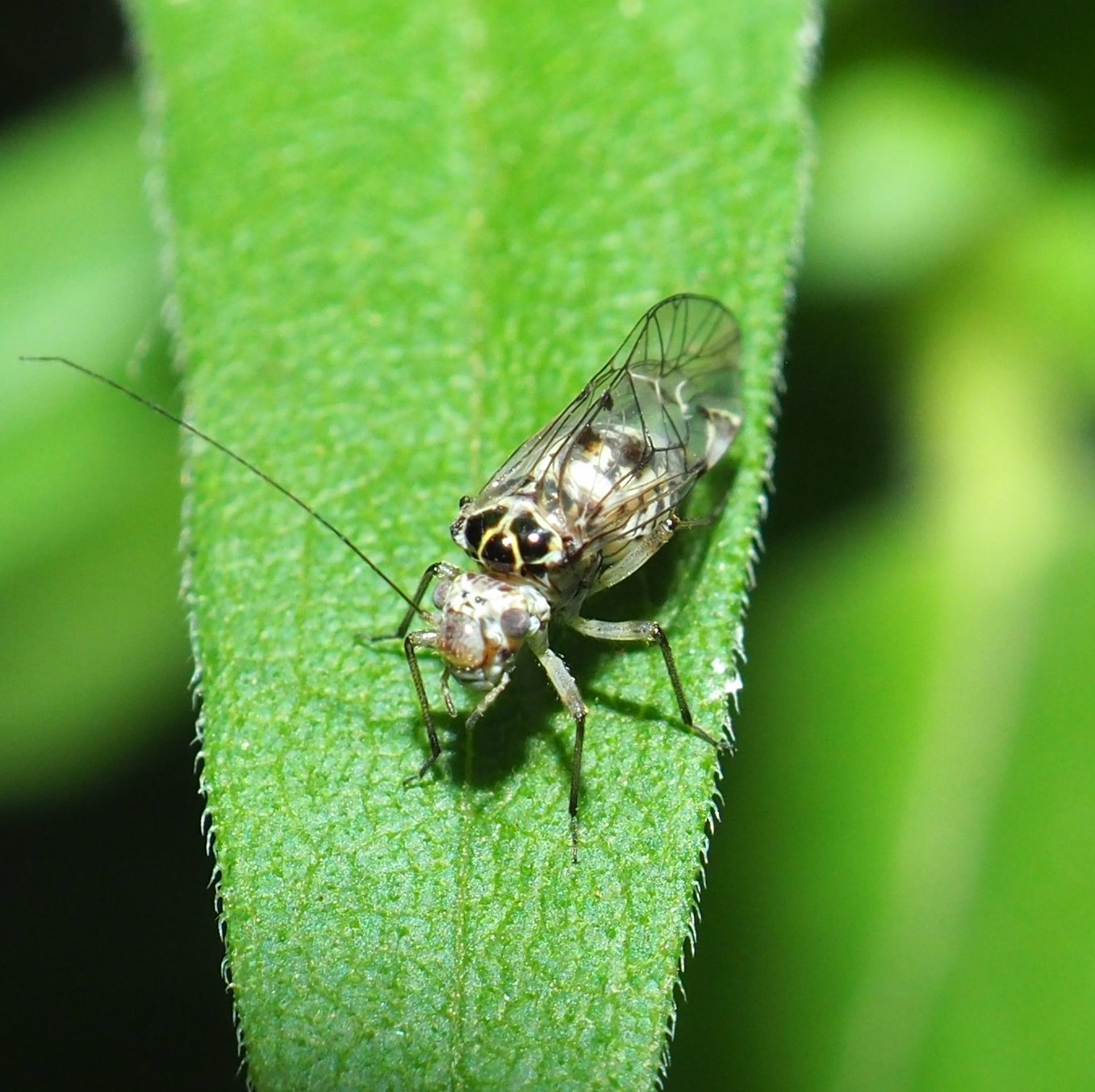
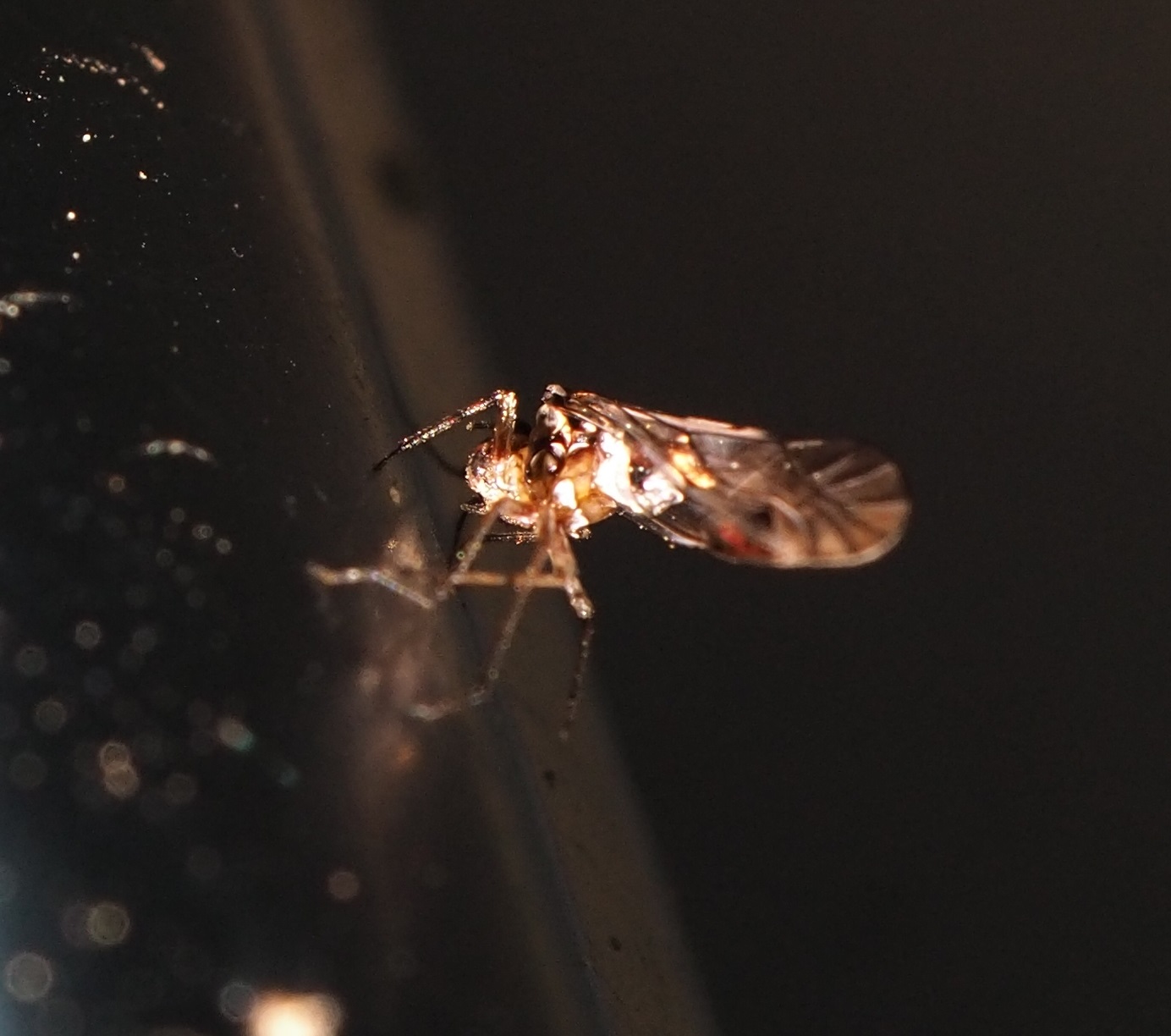
A beetle -- I don't know which.. Nor do I know for sure what the next weevil is, but maybe a bruchid. Third is a rather small click beetle.
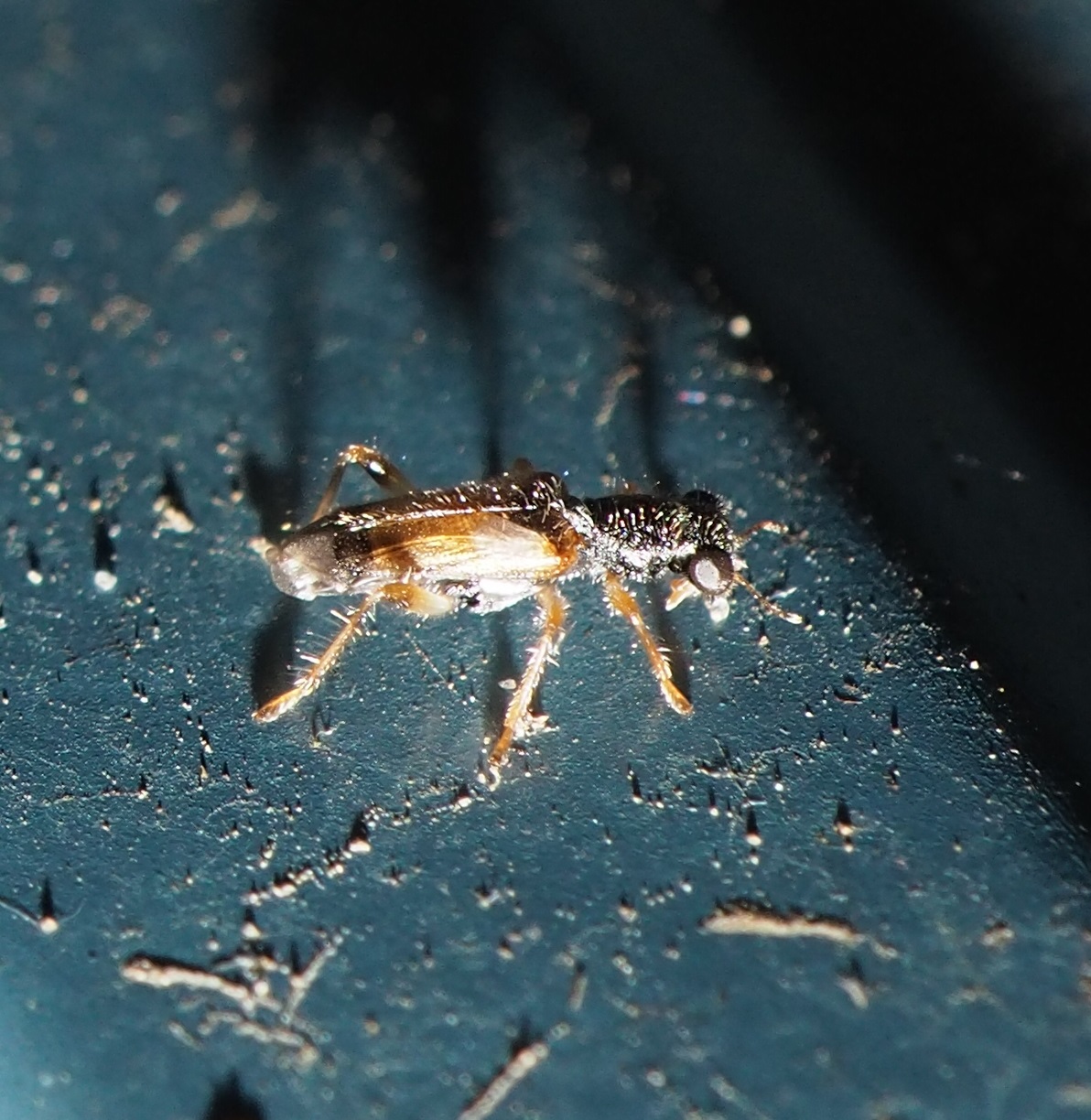

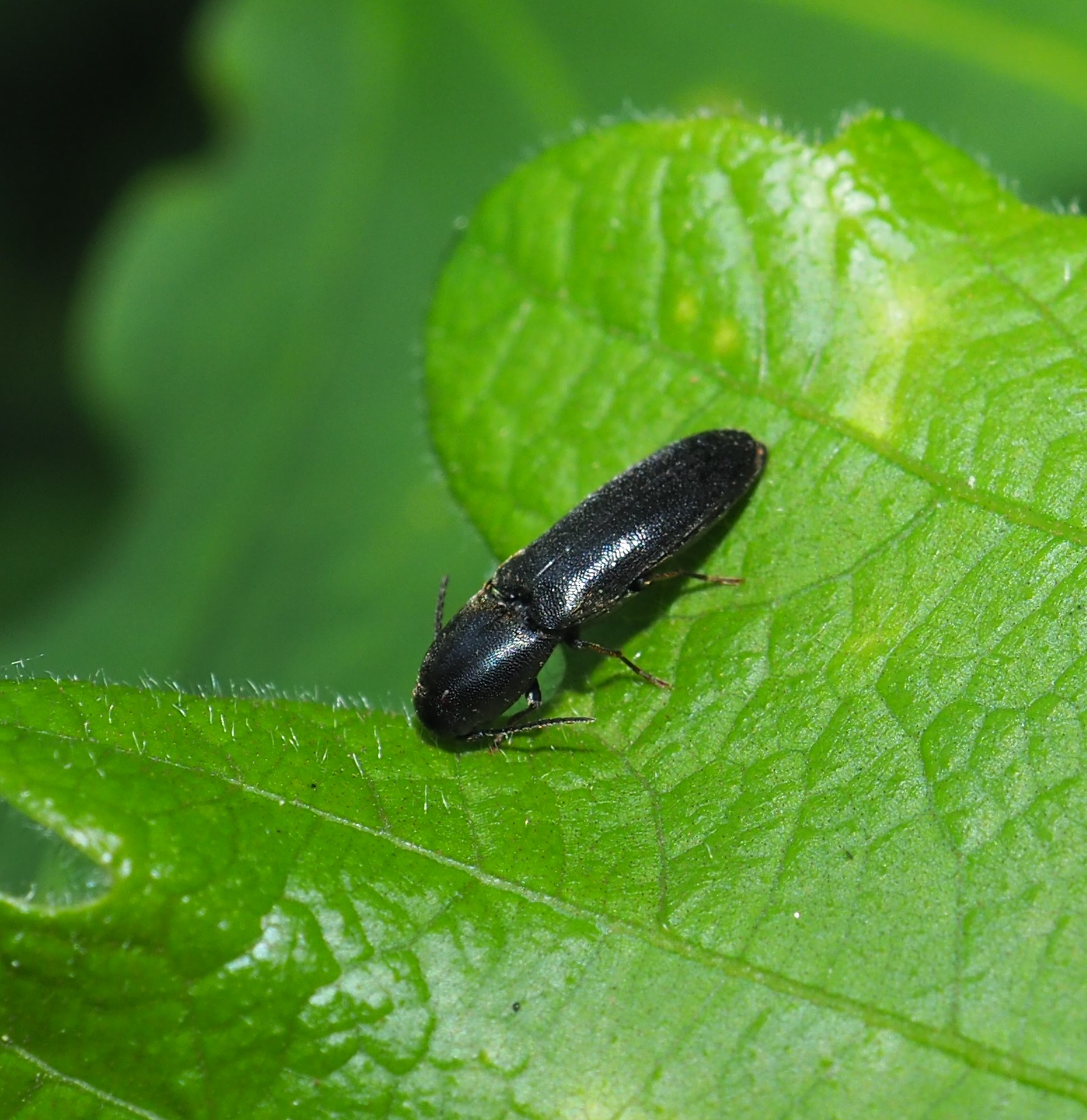
There were a couple of species of the Tumbling Flower Beetles. And of course one Japanese Beetle.
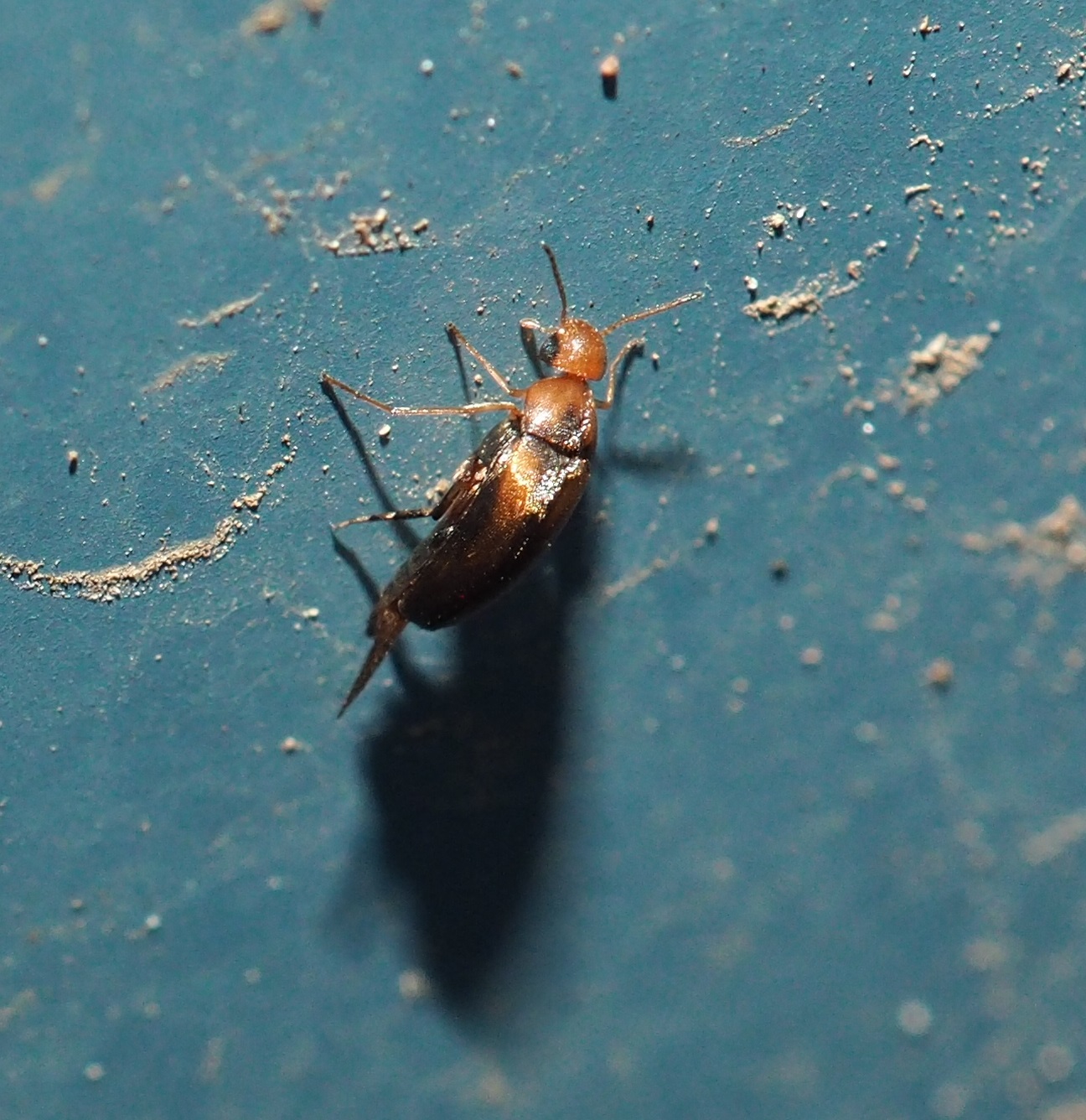

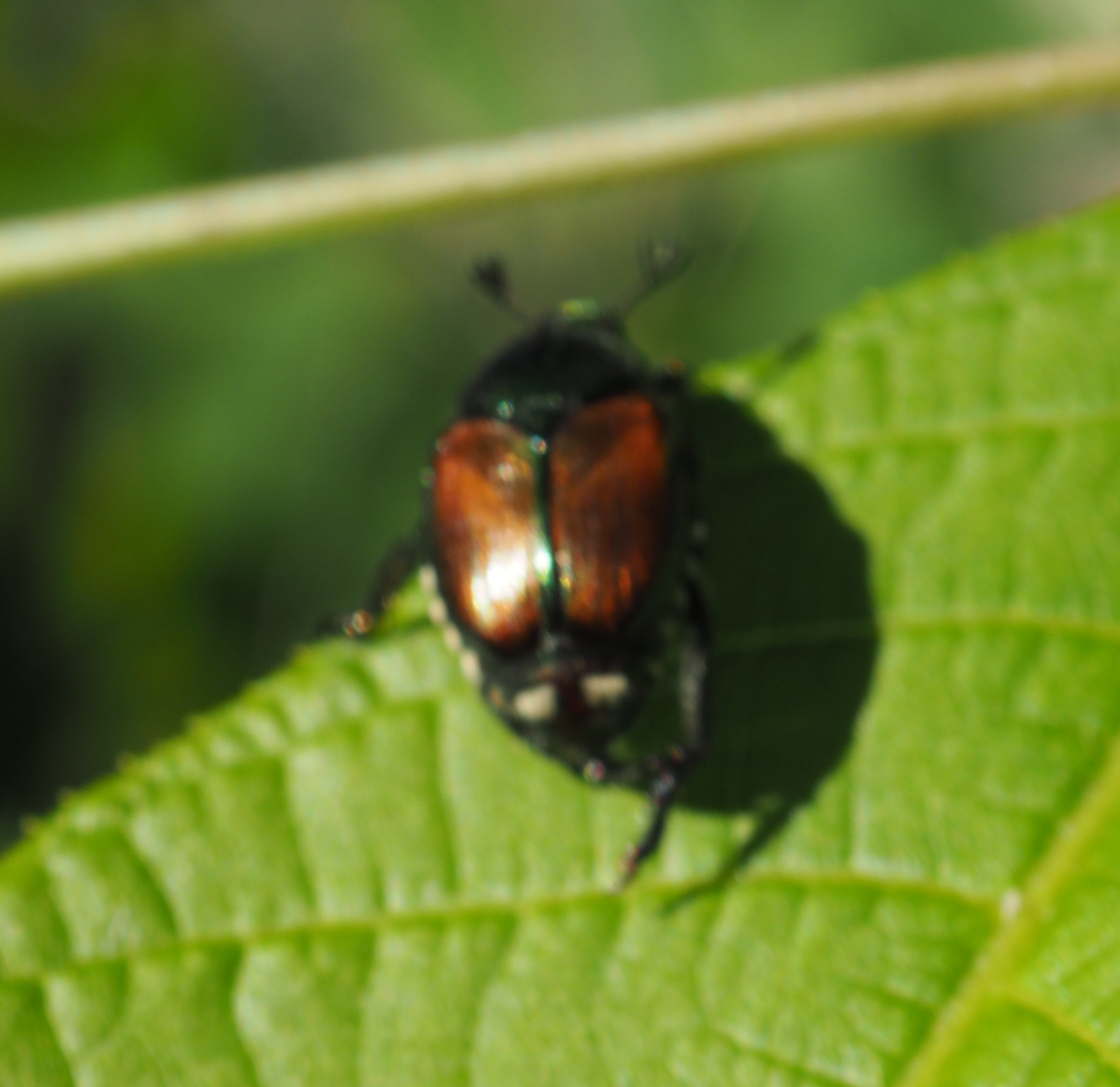
This bug is the nymph of a two-striped planthopper (Acanalonia bivittata). When it is adult, it will be the most gorgeous green. There were a few of these on oak leaves near my neighbor's gate. But I also found one yesterday on a redbud leaf. Here is a picture of one of them heading up the twig and an all foam or fluffy one headed in the opposite direction. This assassin bug looks to be in genus Zelus, and was found not too far from the redbud tree whence it might have hatched. I've never seen that shade of mauve on Z. luridus, so maybe is a Z. renardii nymph.
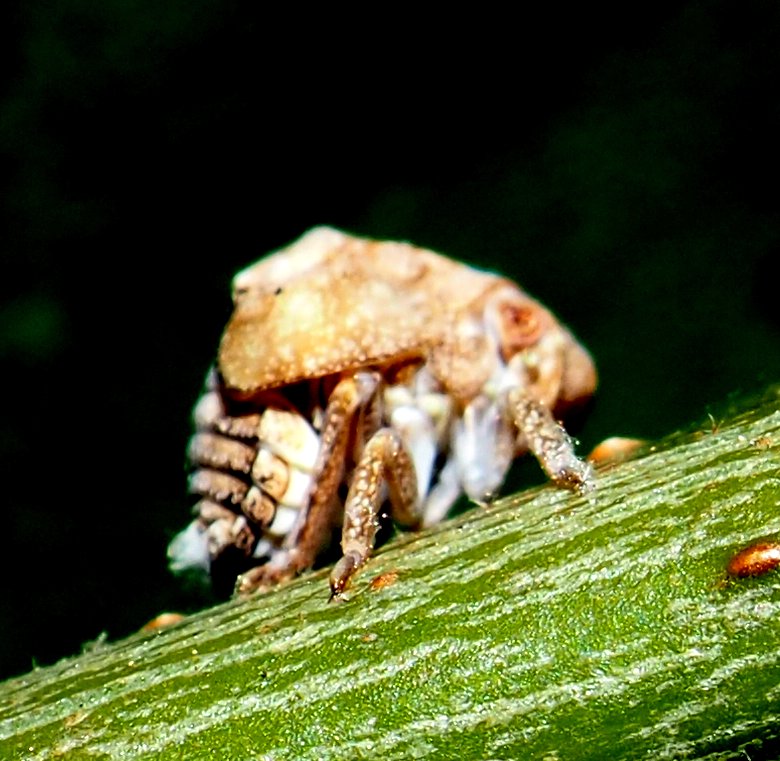

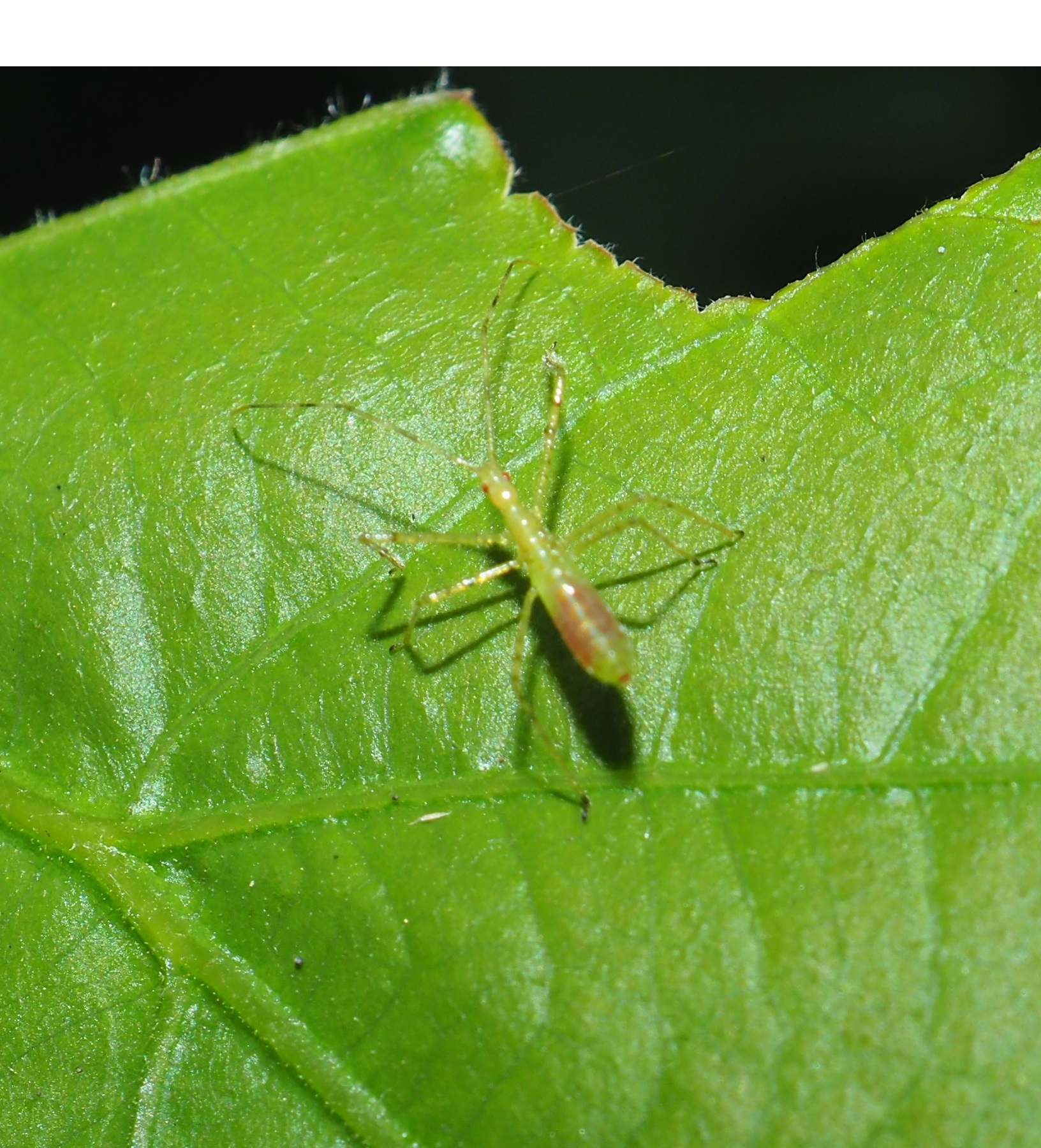
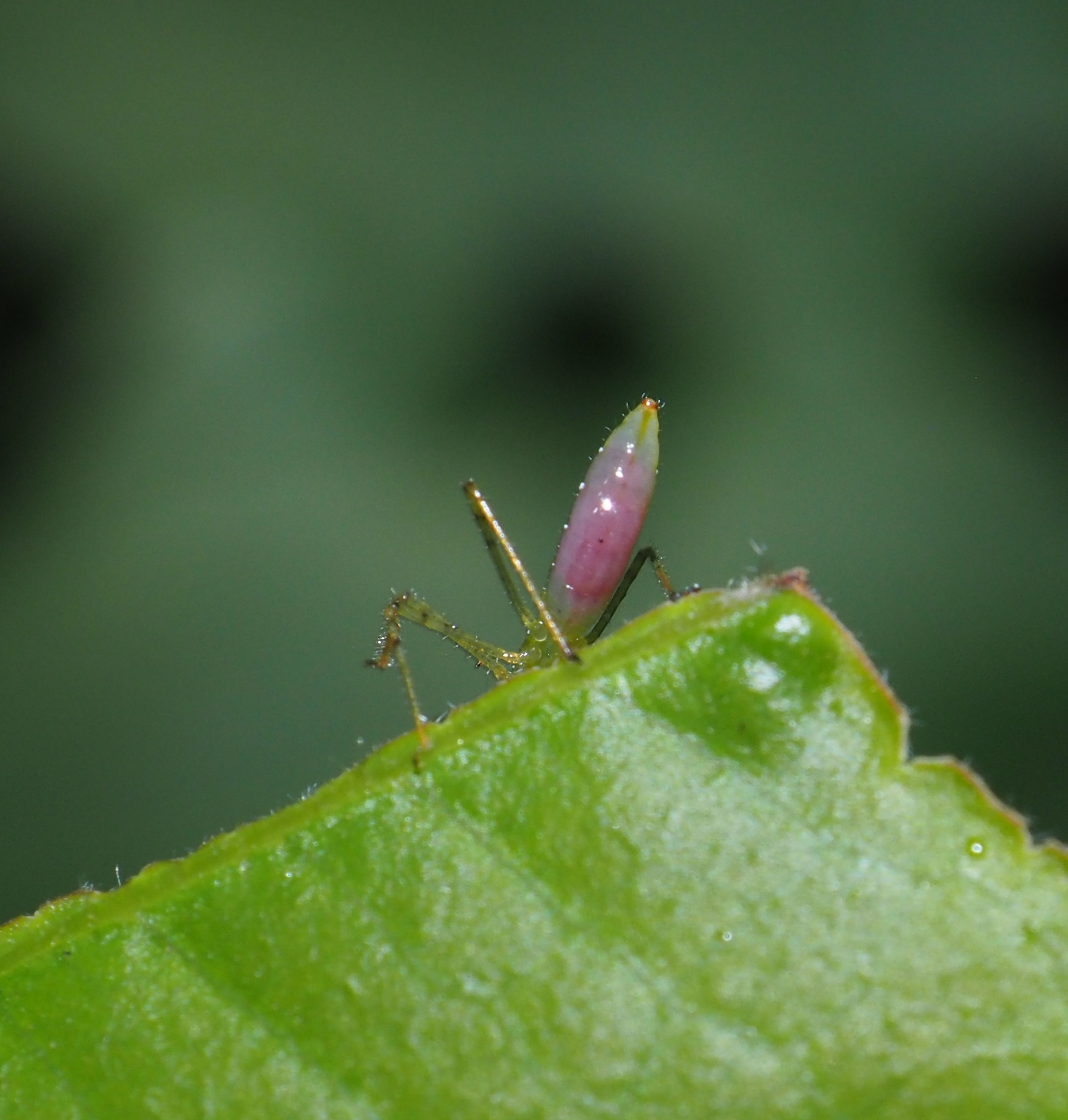
Since we're in the vicinity, let's look at some more hoppers. Here we see the Green Buffalo Treehopper and the Two-mark Treehopper. And finally ease into the leafhoppers and other bugs.
This is the nymph of the leafhopper Jikradia olitoria. We had seen one last week of a different color pattern; and finally the shades of green one we all admire so.
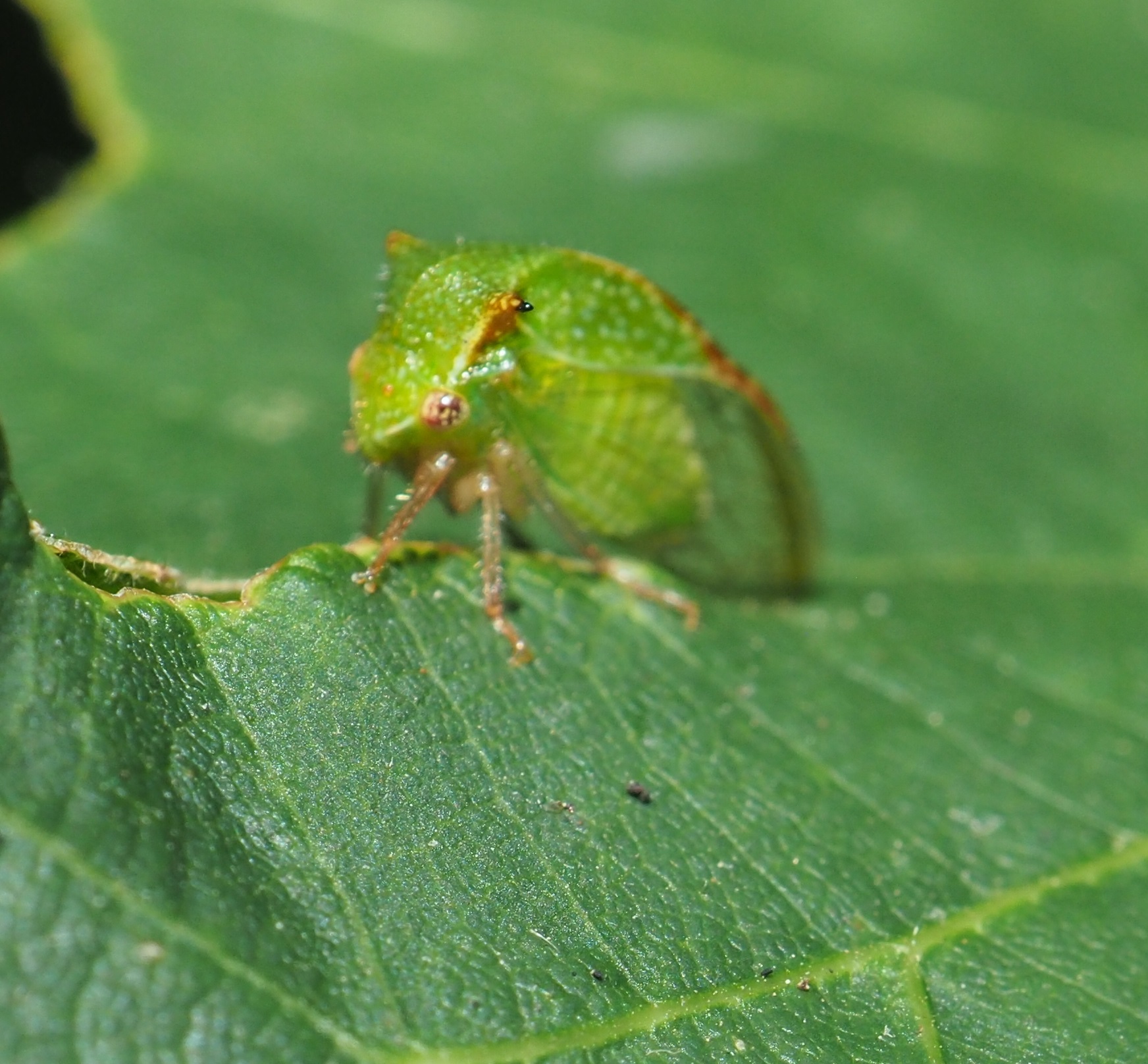
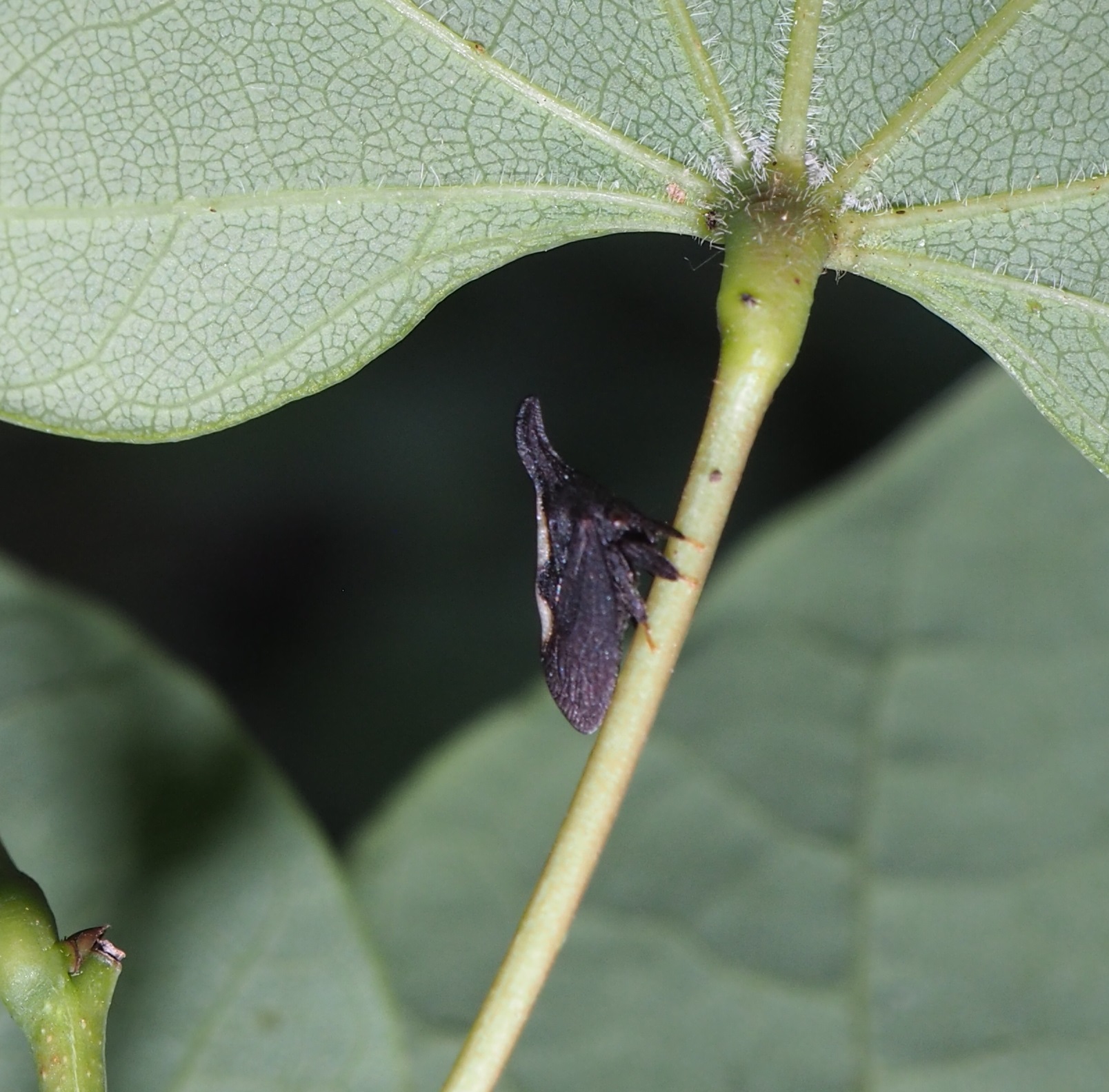
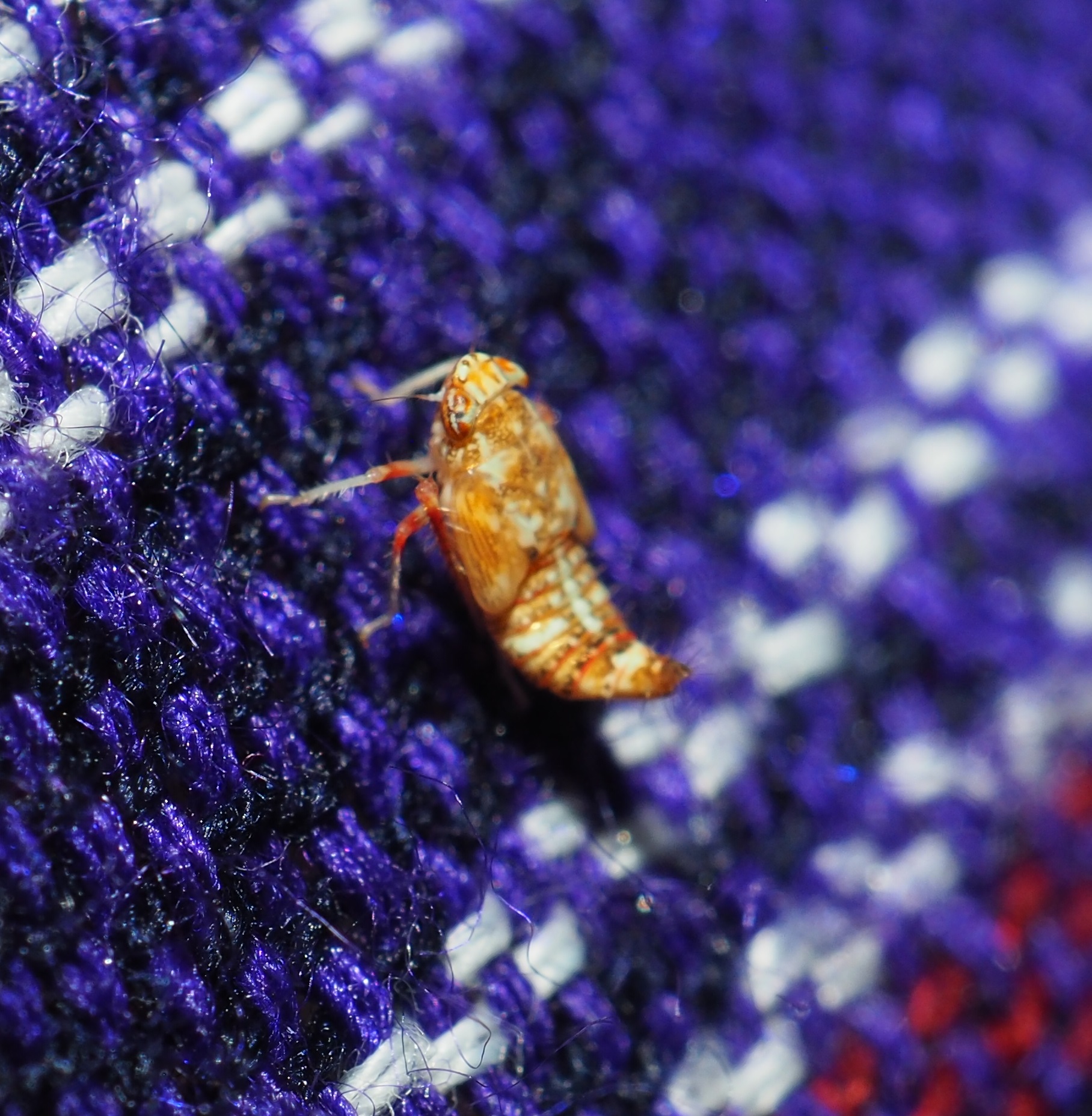
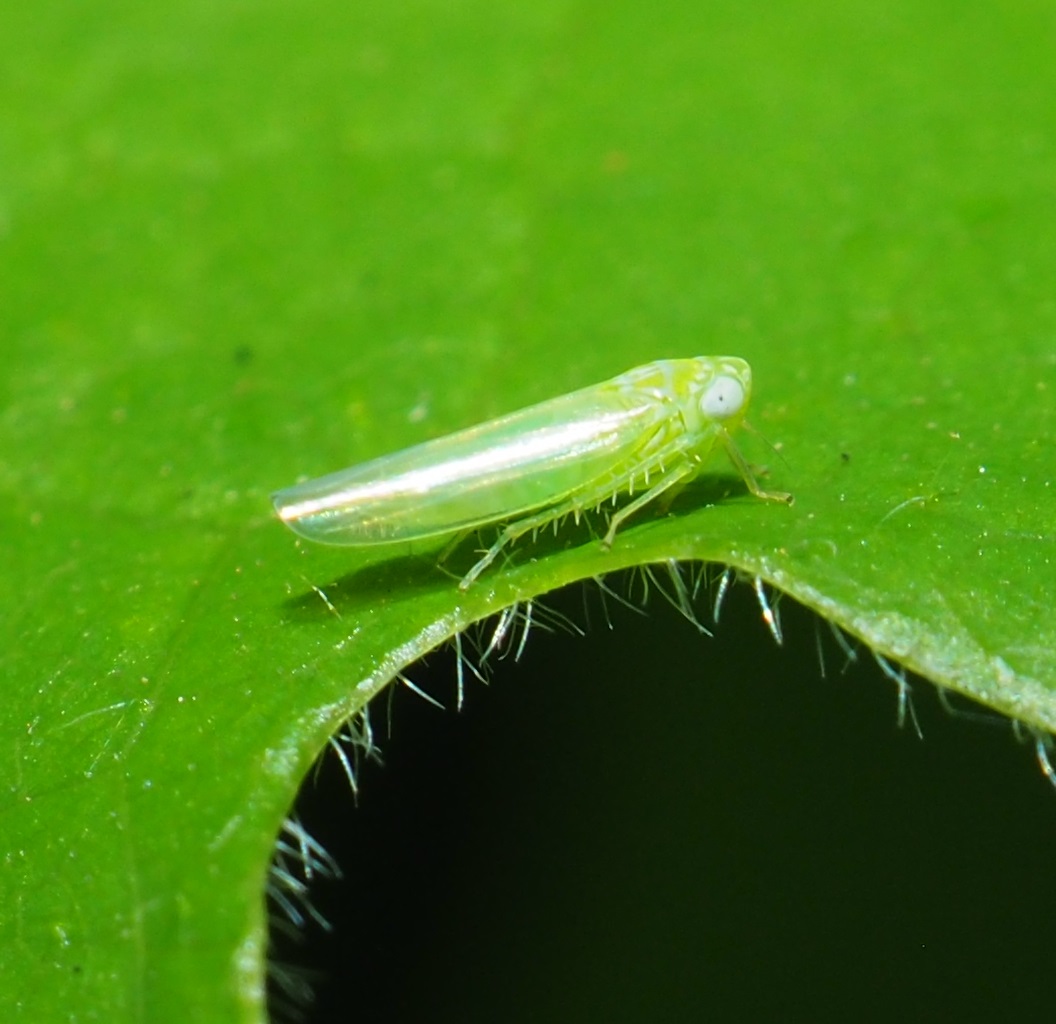
More leafhoppers. First is that one that looks as if you could break it into two pieces, like an Almond Joy. The red one; one of the Candy-Striped leafhoppers.


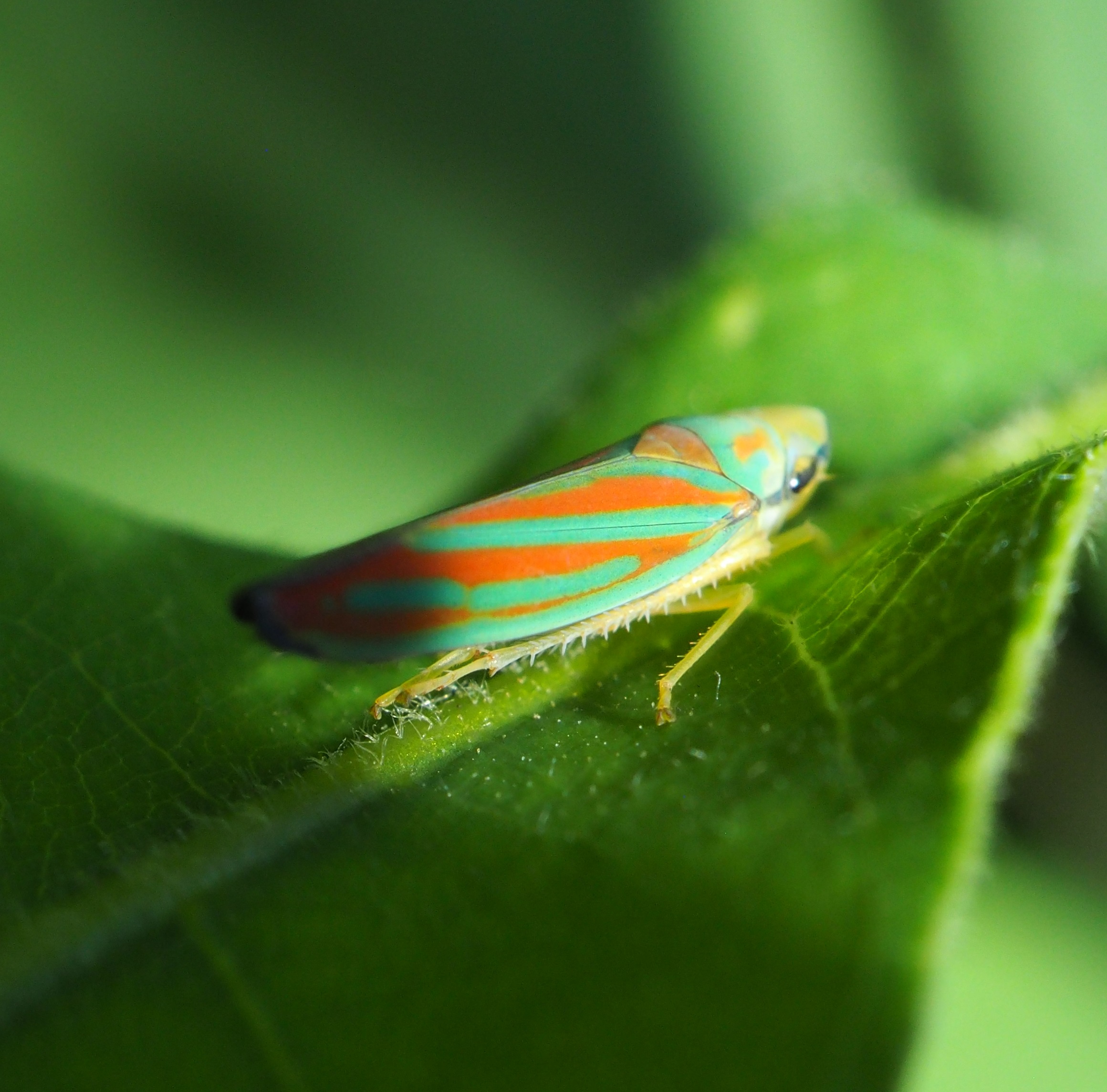
More leafhoppers. First is the Japanese Maple leafhopper; then a striking one in shades of Grey: when I first saw this next one, I thought of the family of Scaphoideus, which has a flower-like motif at the end of the wing.
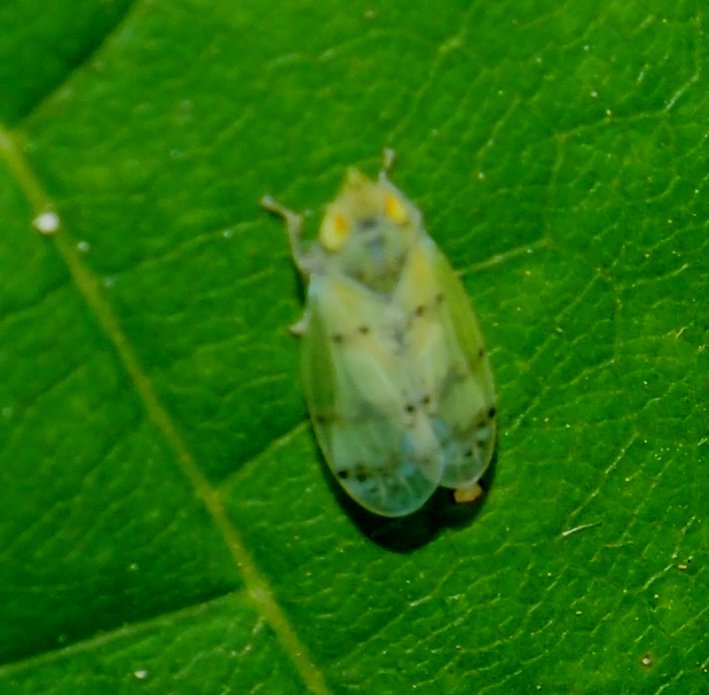
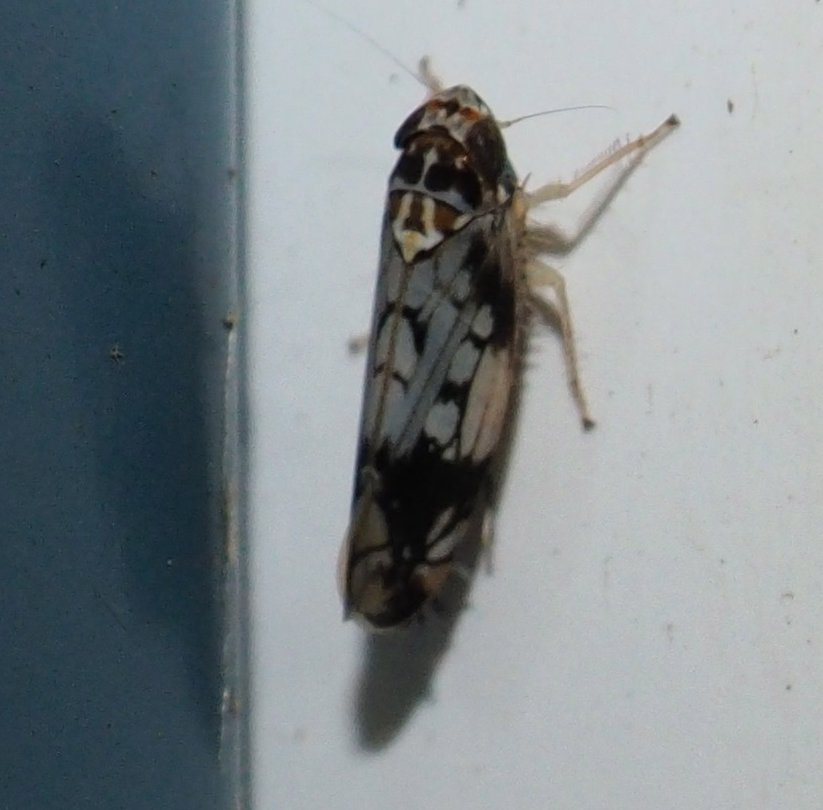
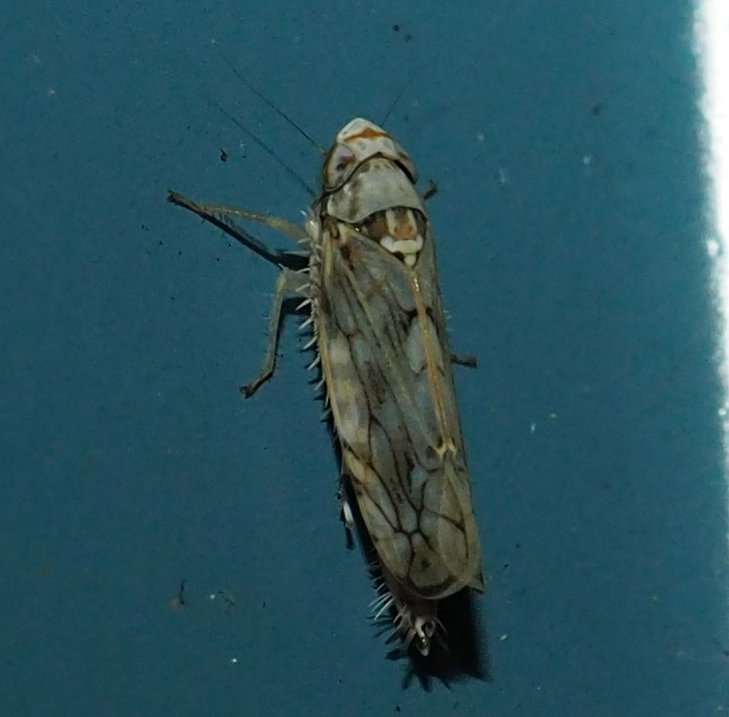
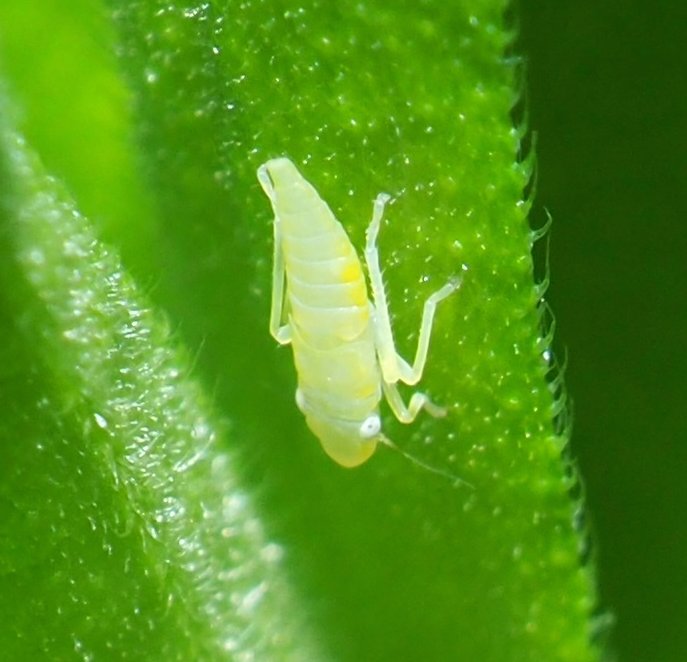
Down to the Plant Bugs, as distinguished from the Planthoppers. Maybe it means they eat plants. Or like them as furnishings. This "black and white" one isn't really any such thing as it has lots of shades of green and yellow when the light hits it. Anyway, it has been the most numerous PB I've seen this spring. They stand quite still when the camera is turned on them. Which is too bad, since this one doesn't notice the lurker behind the leaf. Next is a brown plant bug of a quite different kind. And here, you'll remember the White-margined Burrowing Bug.
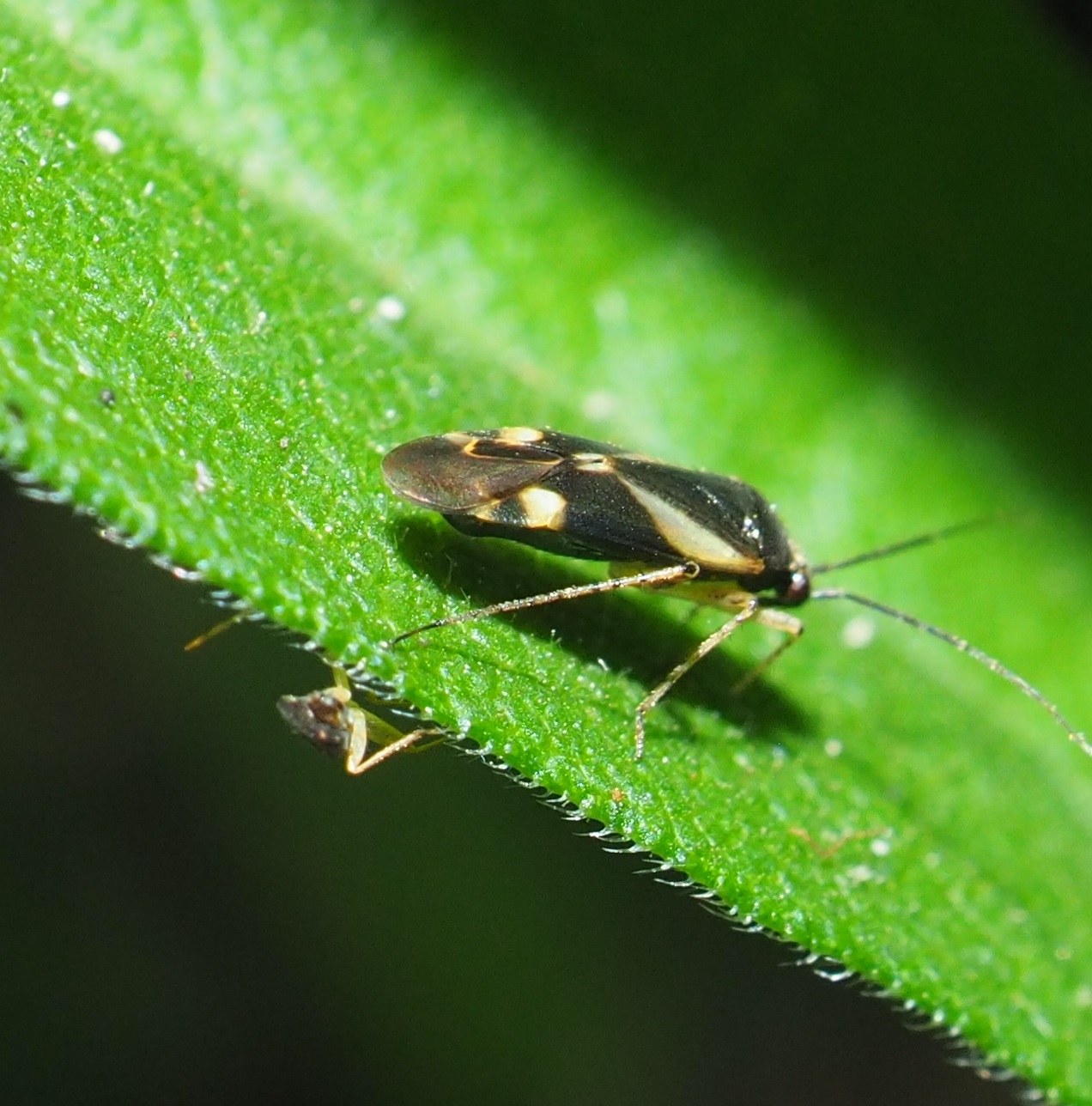


Before we get to the flies, I have two photos of tiny eggs. The first are mostly empty and I don't know what kind they are. The second lot are more disturbing. I had a picture last week of a baby BMSB (Brown Marmorated Stink Bug.) I do hope that by photographing them and leaving them alone to wander off I haven't fostered a huge generation of the enemy.
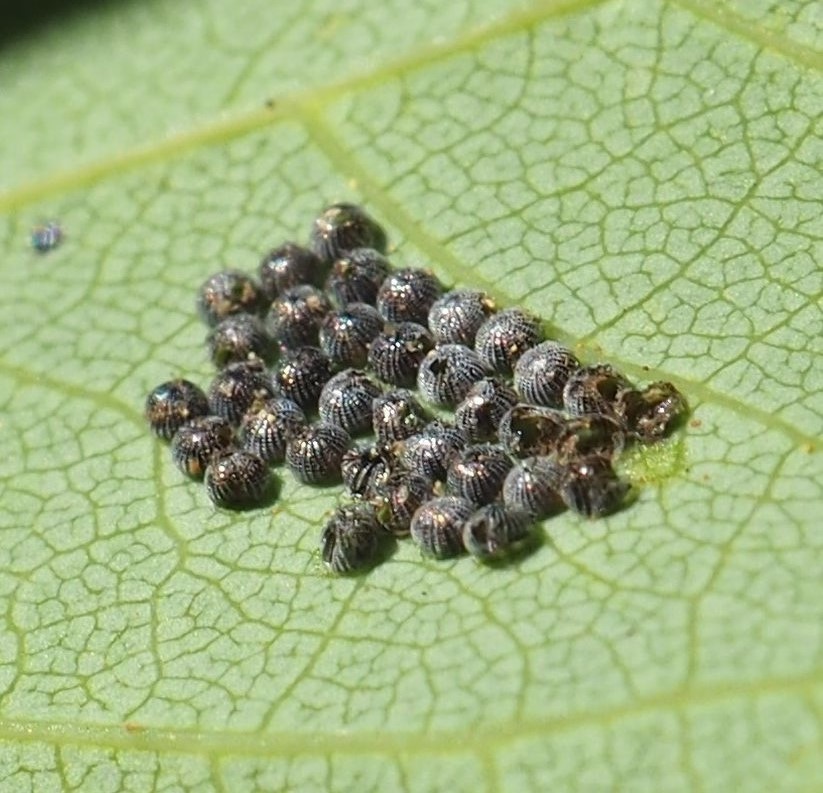
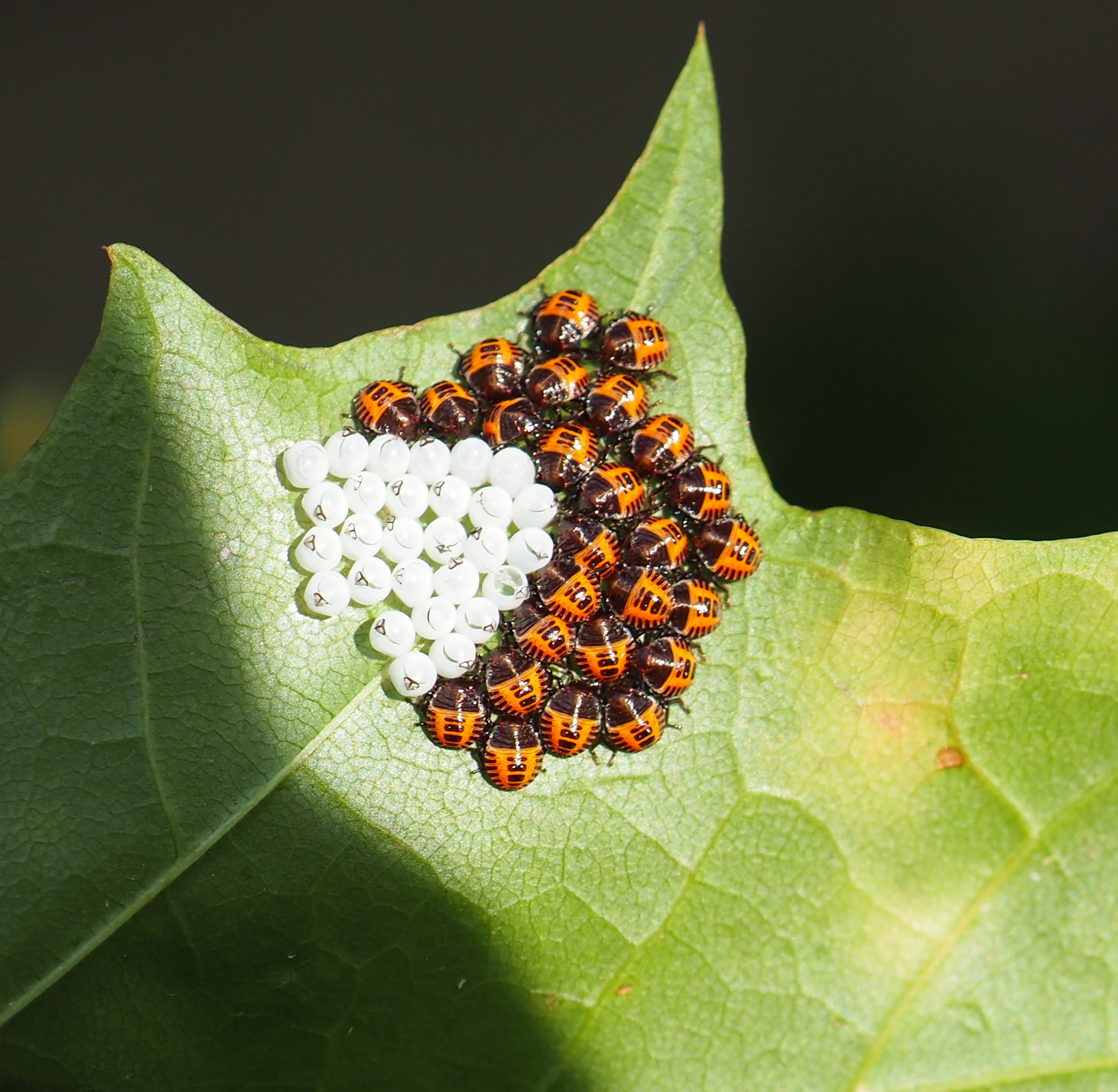
Life in the shade was so attractive, I didn't see many flies on a mission, so you may wonder why we just skip from one to the other. But think of it this way: these are good examples of the variety that exists in the world of flies. This first little fly definitely needs a shave or a mowing. If it weren't for the big eyes I would hae called it a beetle. The next is a cute little pink fly with spotty wings. And by now you know a moth mimic when you see it.
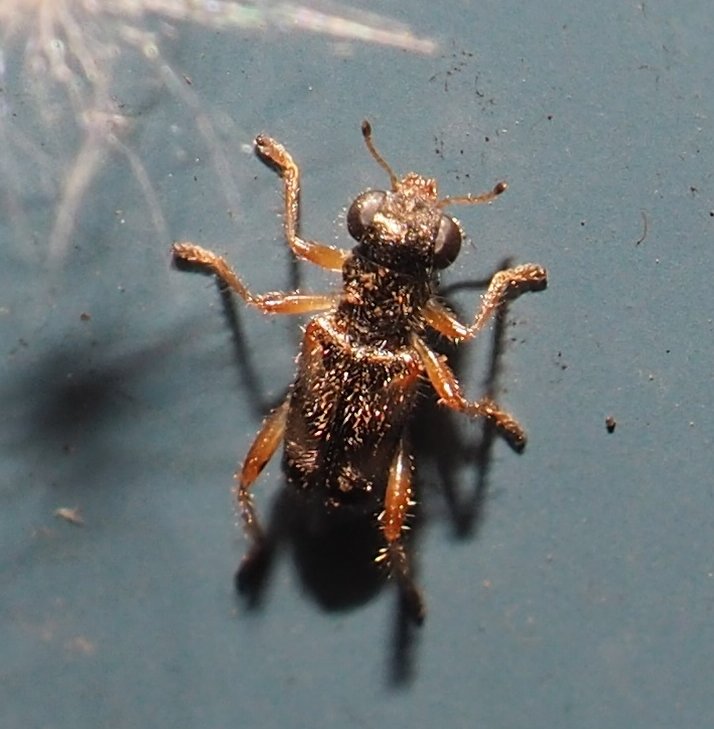
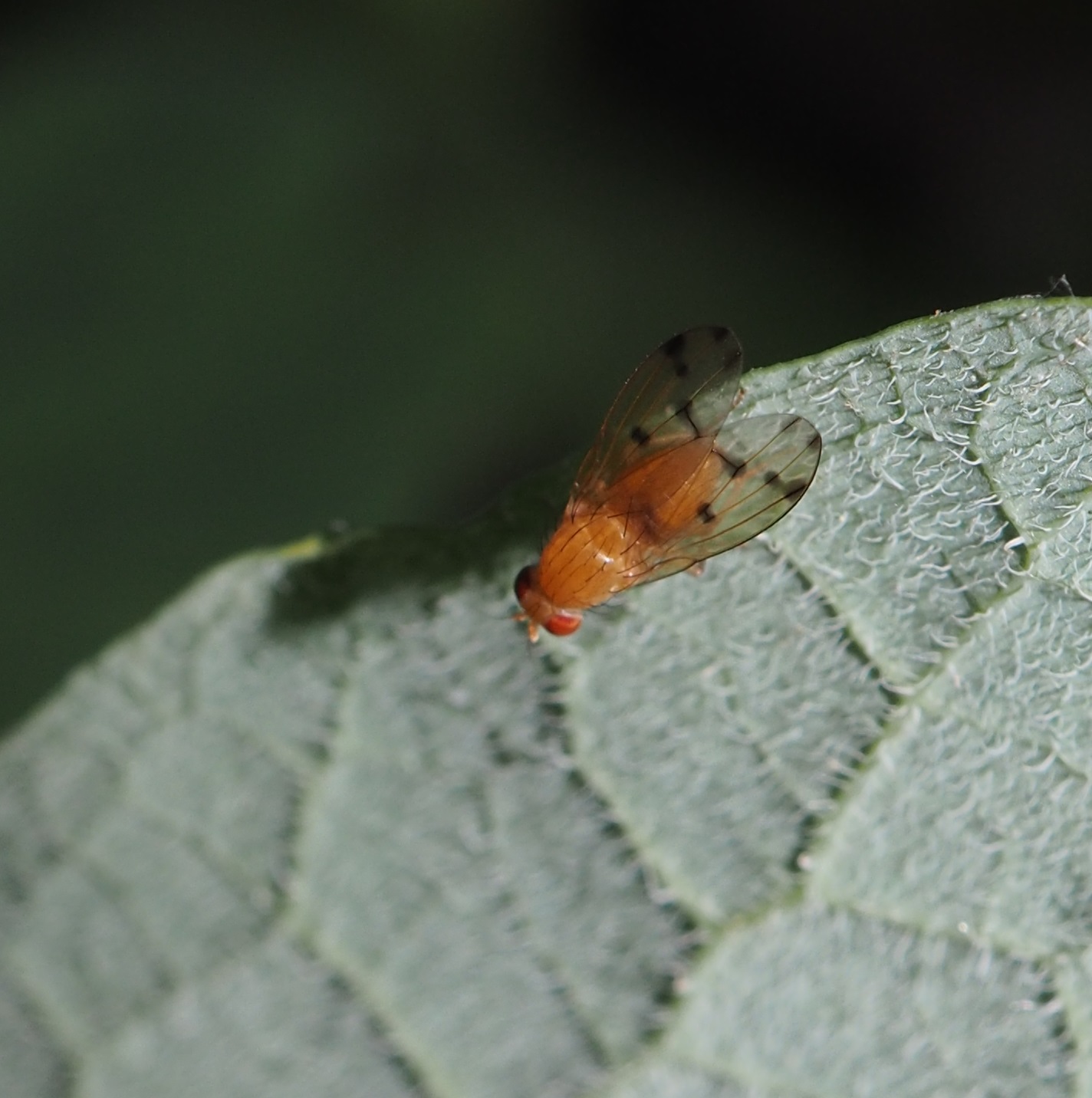
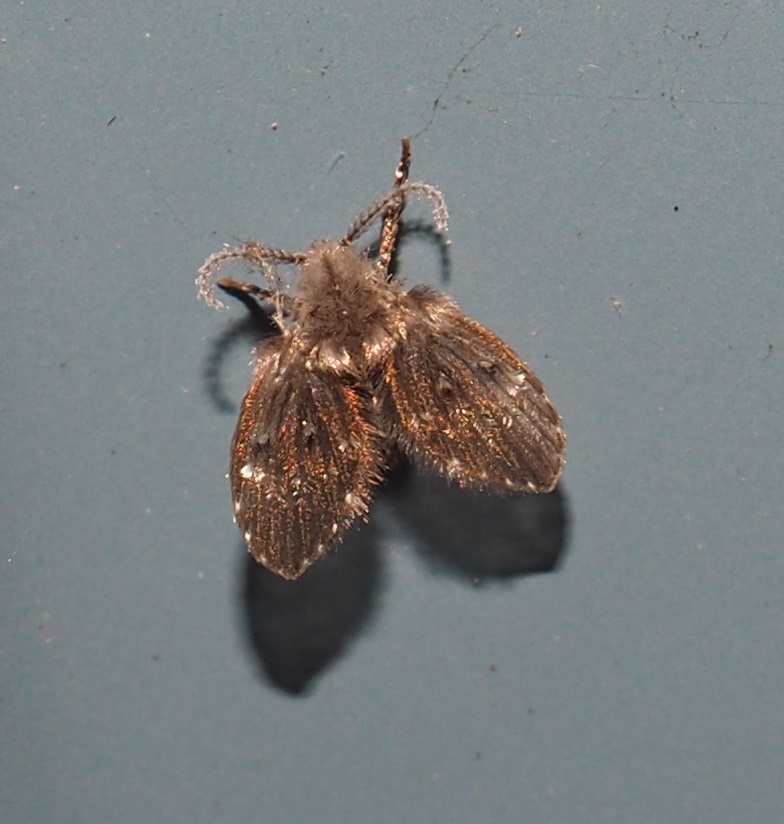
Here is a fly with spectacular eyes. A pair of robber flies mating on the wing -- They flew right through that little spider web. And a graceful little scavenger fly.
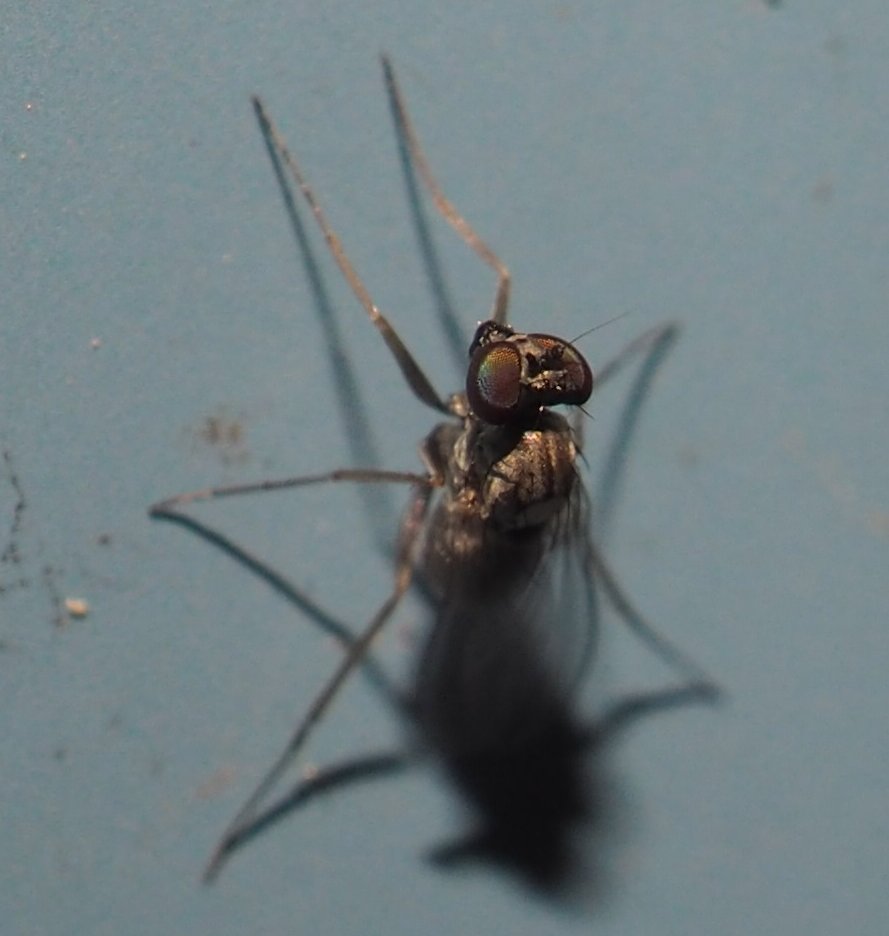
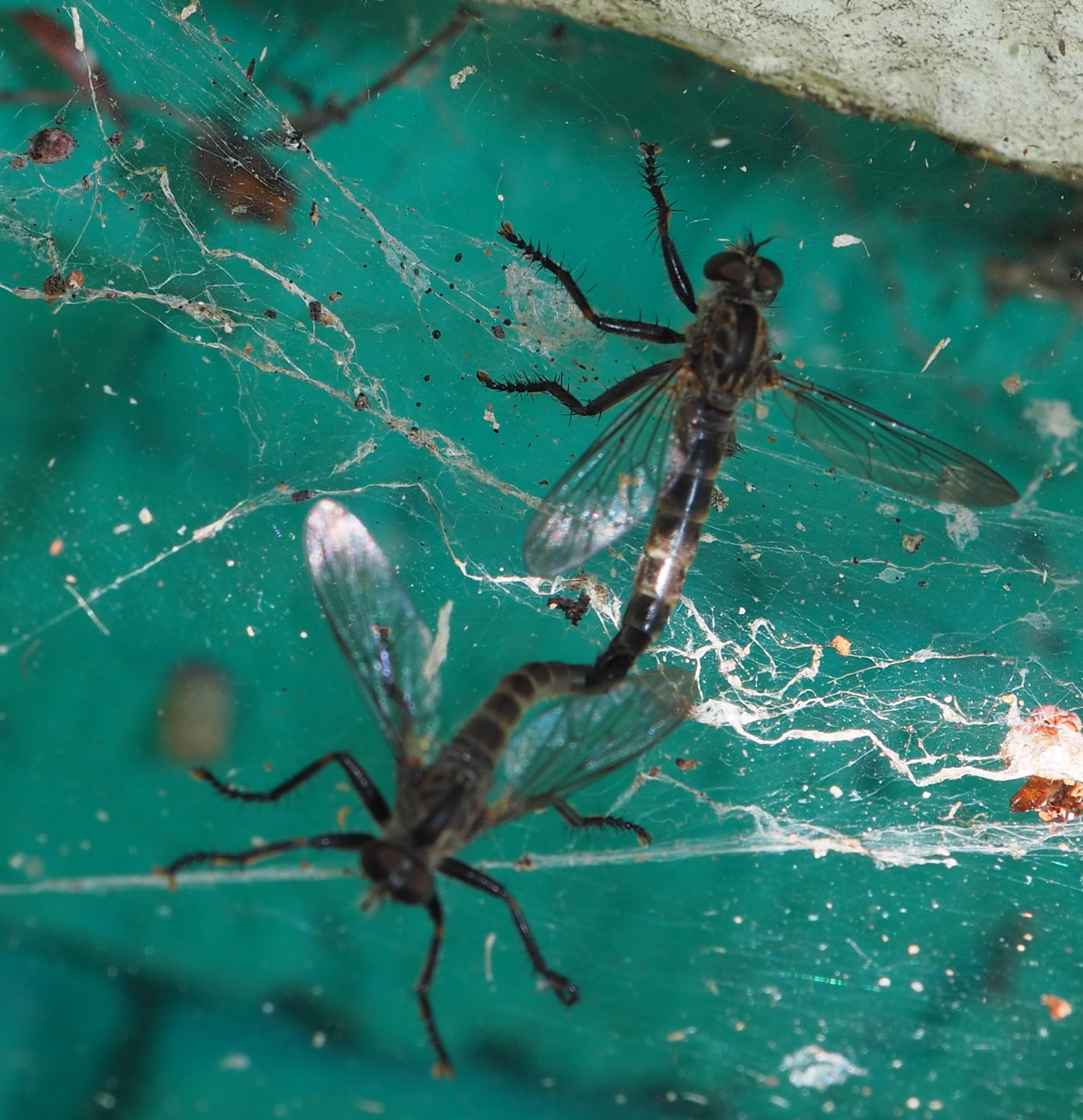

One thing is true at least. Everywhere you look there is a piece of light and color with wings. The long-legged flies are a reliable source of this beauty. Keep your eyes open. Right now is a great time to go out and just look at the greenery - these little flies flit on and off of the green leaves. A little later in the summer they will be less prominent again. So take a deep breath and enjoy all those colors created by iridescence.
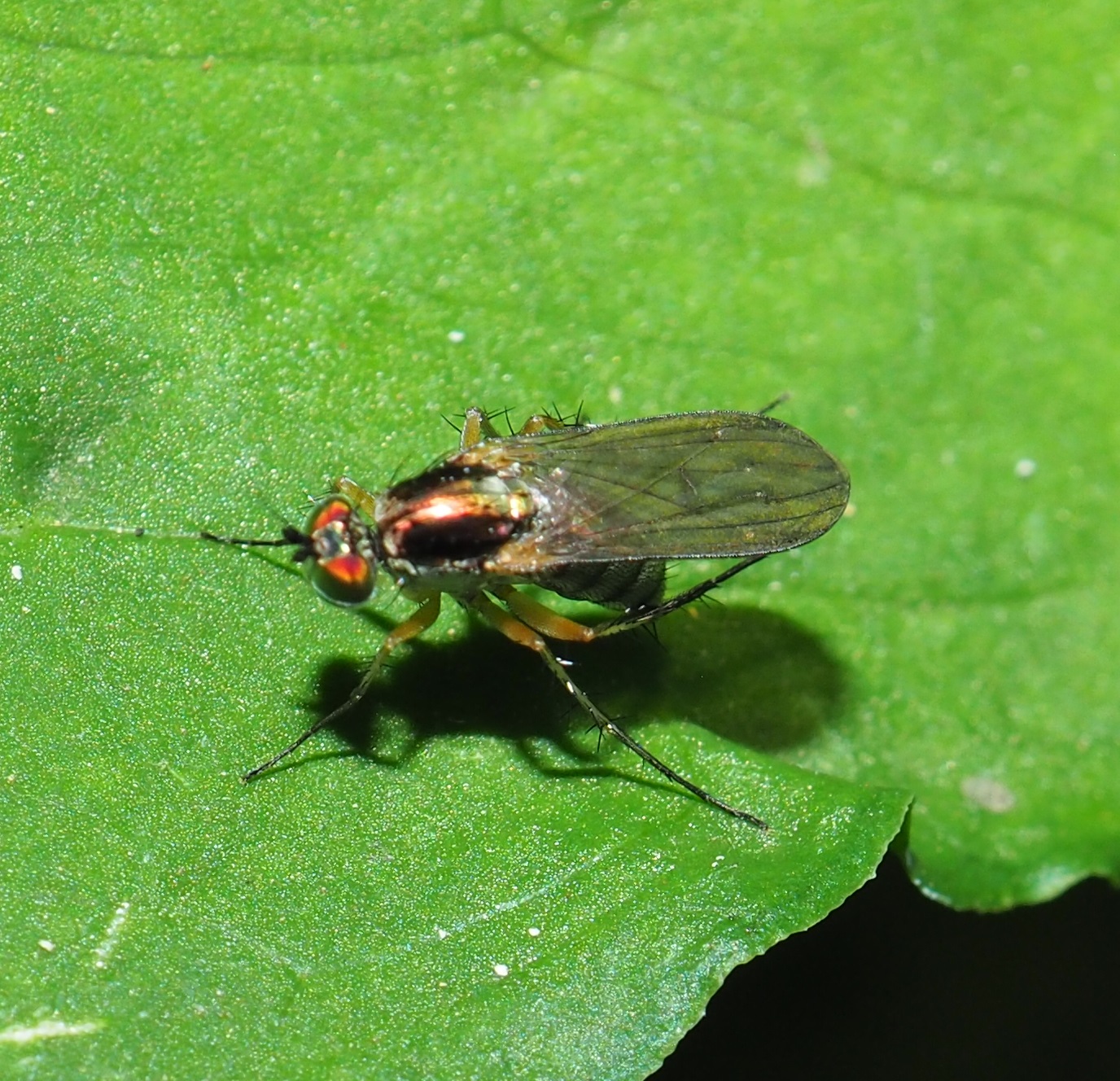
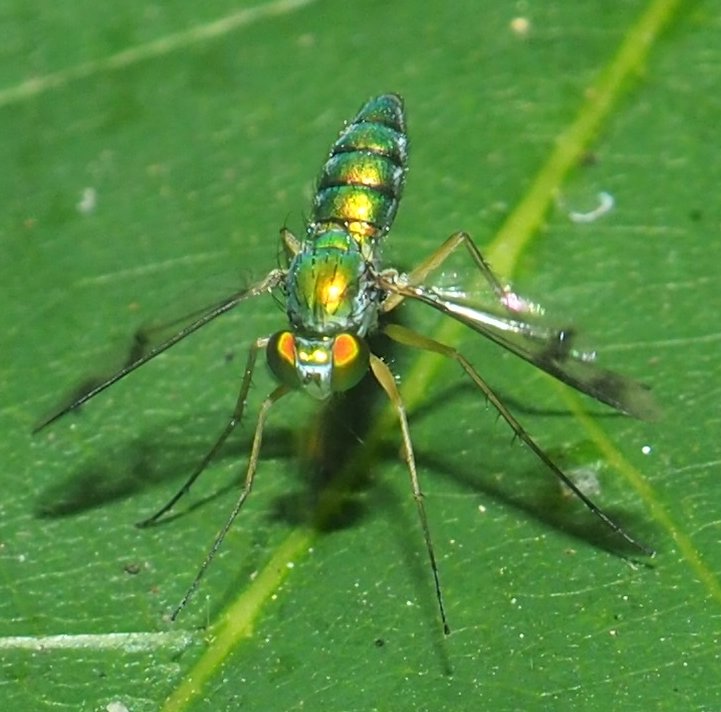
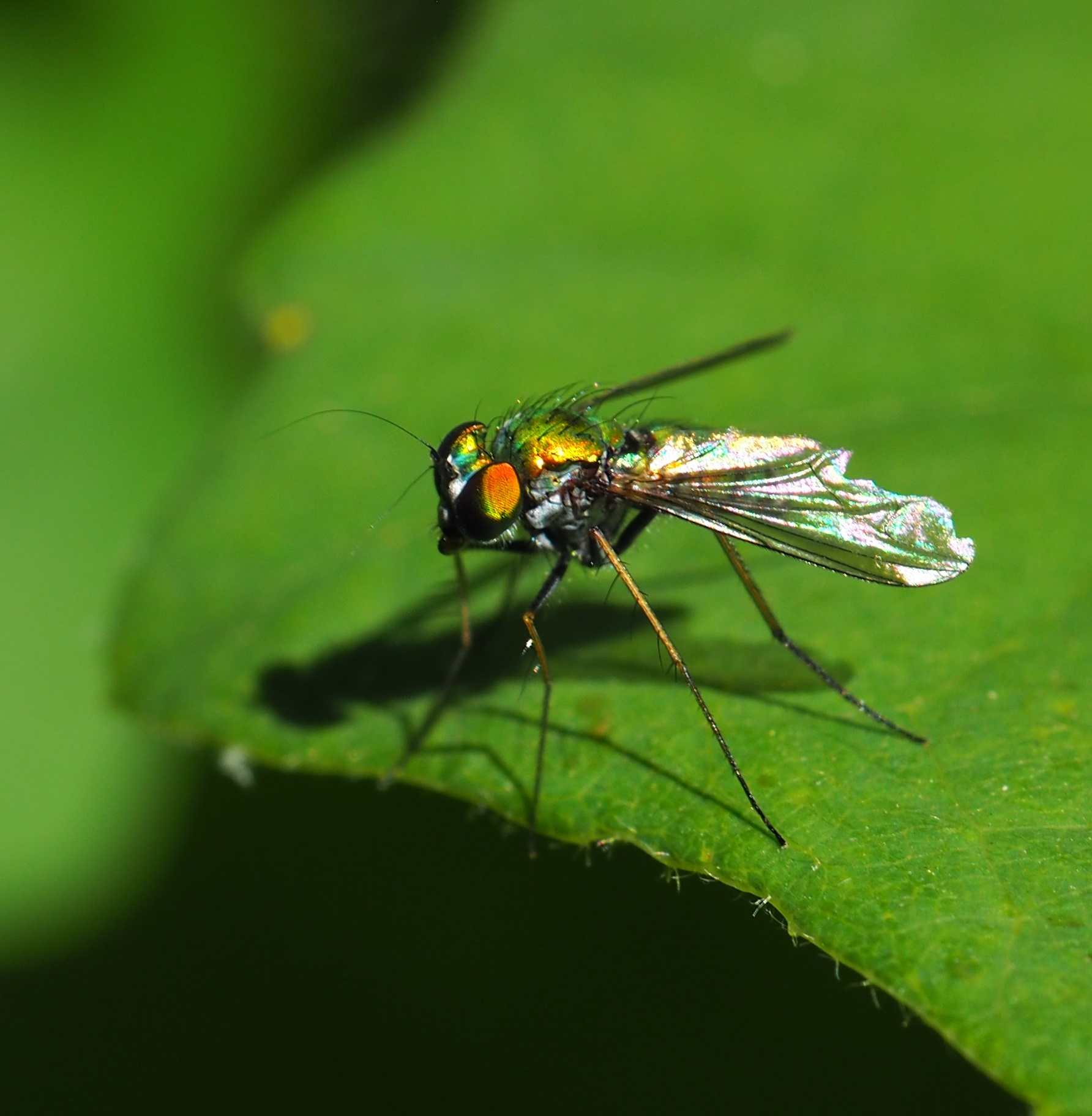
Next come the "harvestmen" or "daddy-long-legs". The third one is something I saw this year and never before (so far as I can remember). :-)
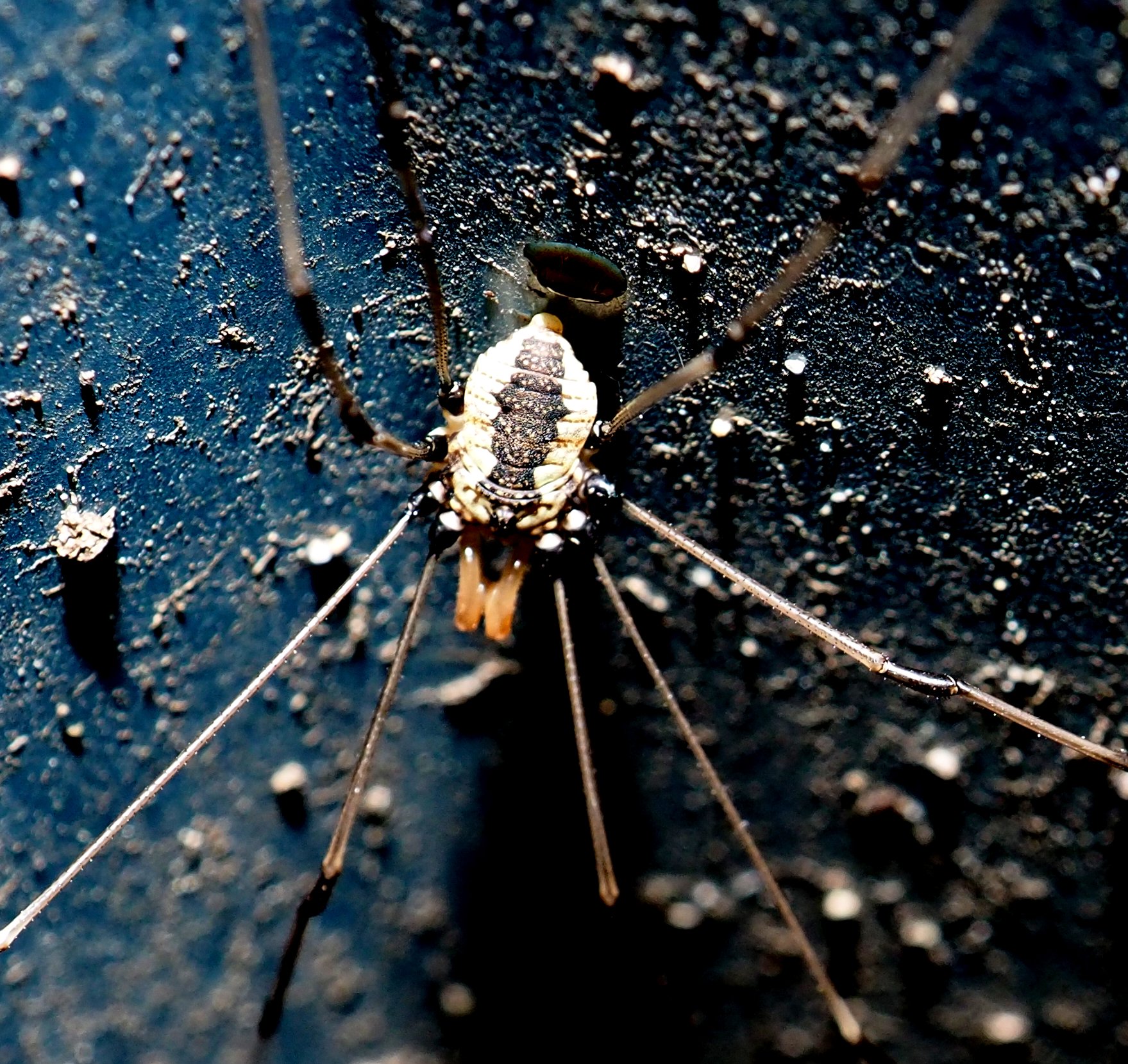
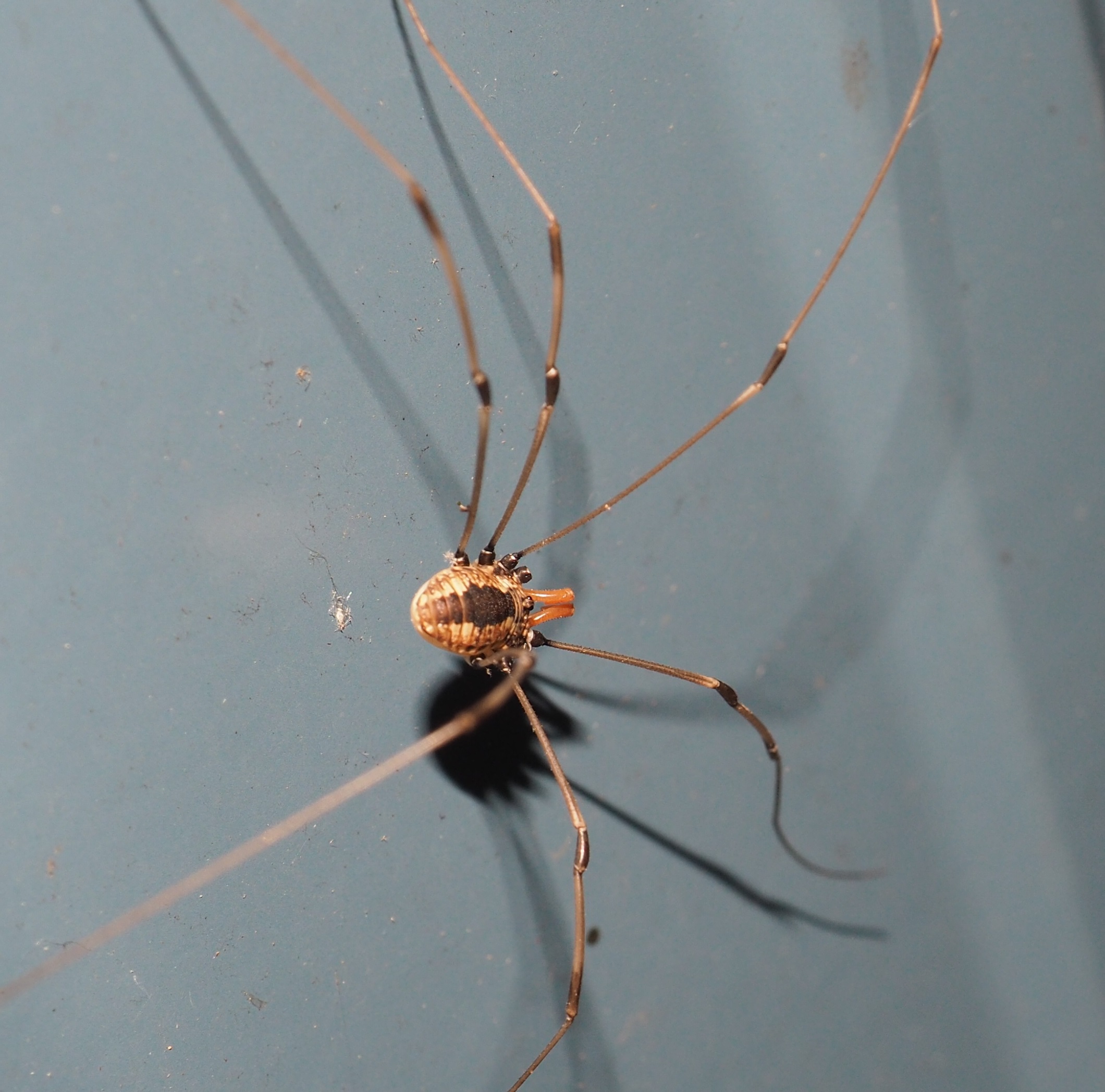
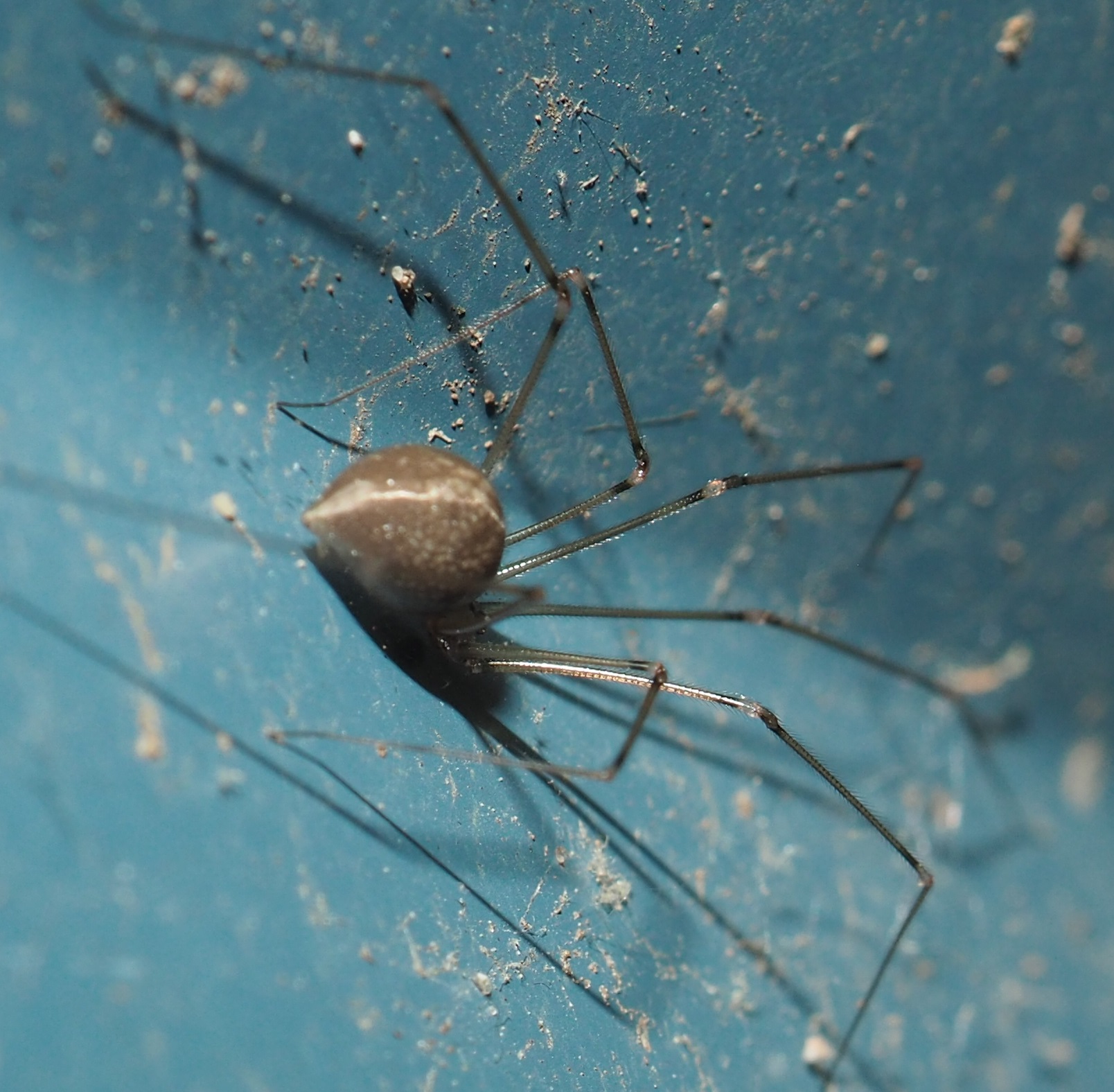
This was the week for one of the species of Mayfly that visits us yearly.
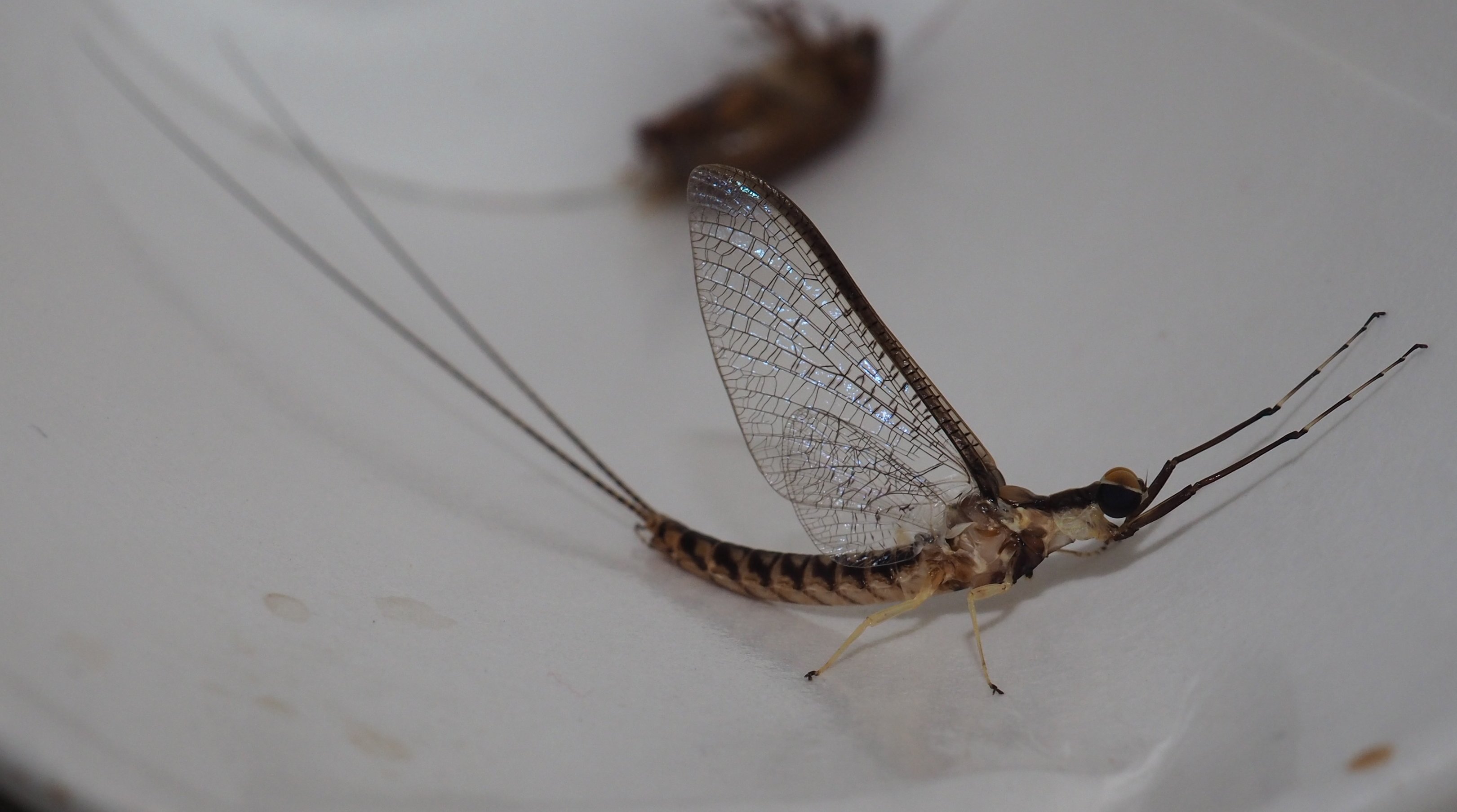
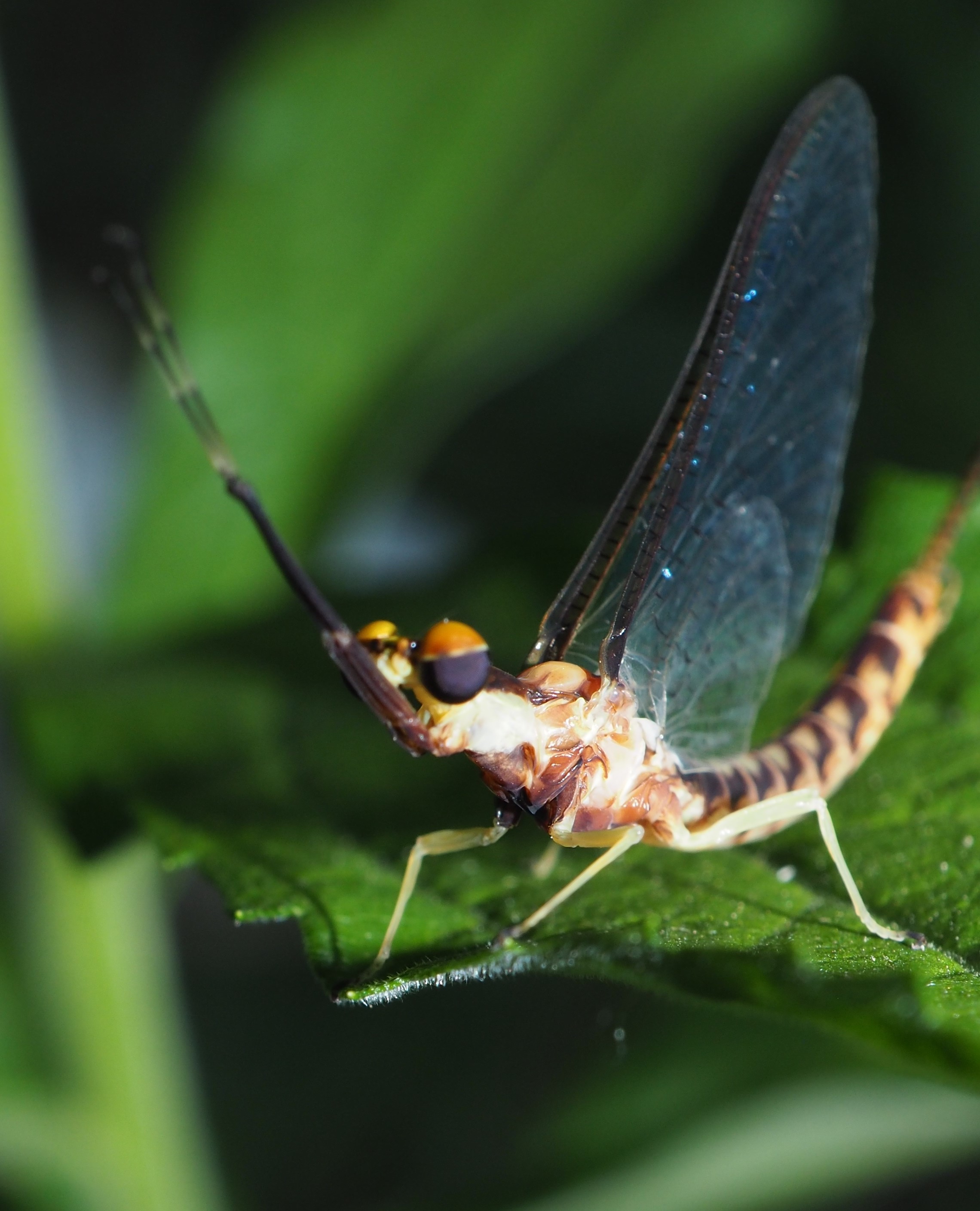

Here is another little collection related to baby butterflies or moths. First up, the little Monarch caterpillars my neighbor left me to baby-sit are already in chrysalis form. Next: a looper (inchworm), the larva of a Geometrid (Greek for "measure the earth") Moth. Last: a swallowtail butterfly snapped by my neighbor James at a stand of Monarda somewhere in Tennessee.

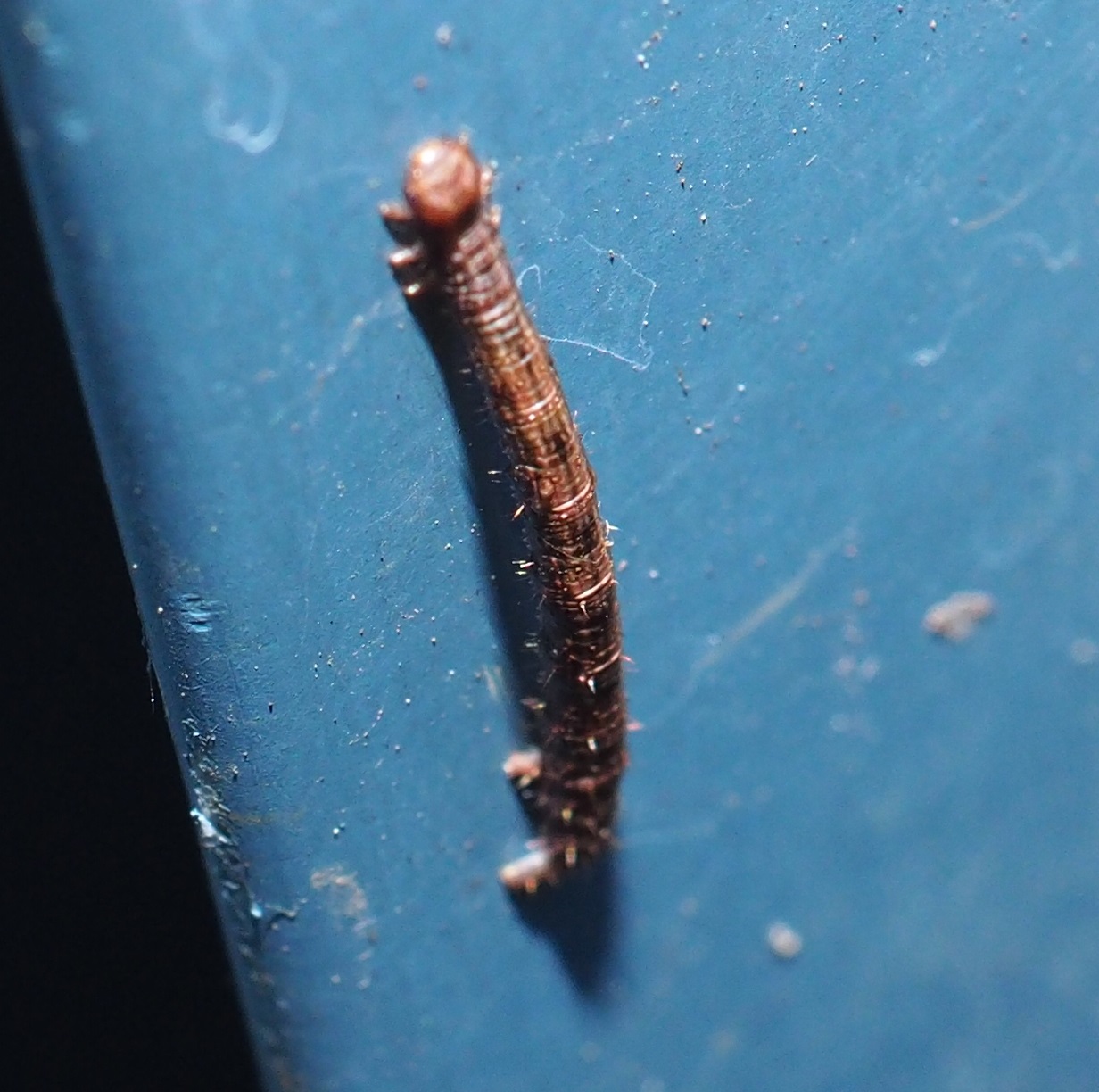
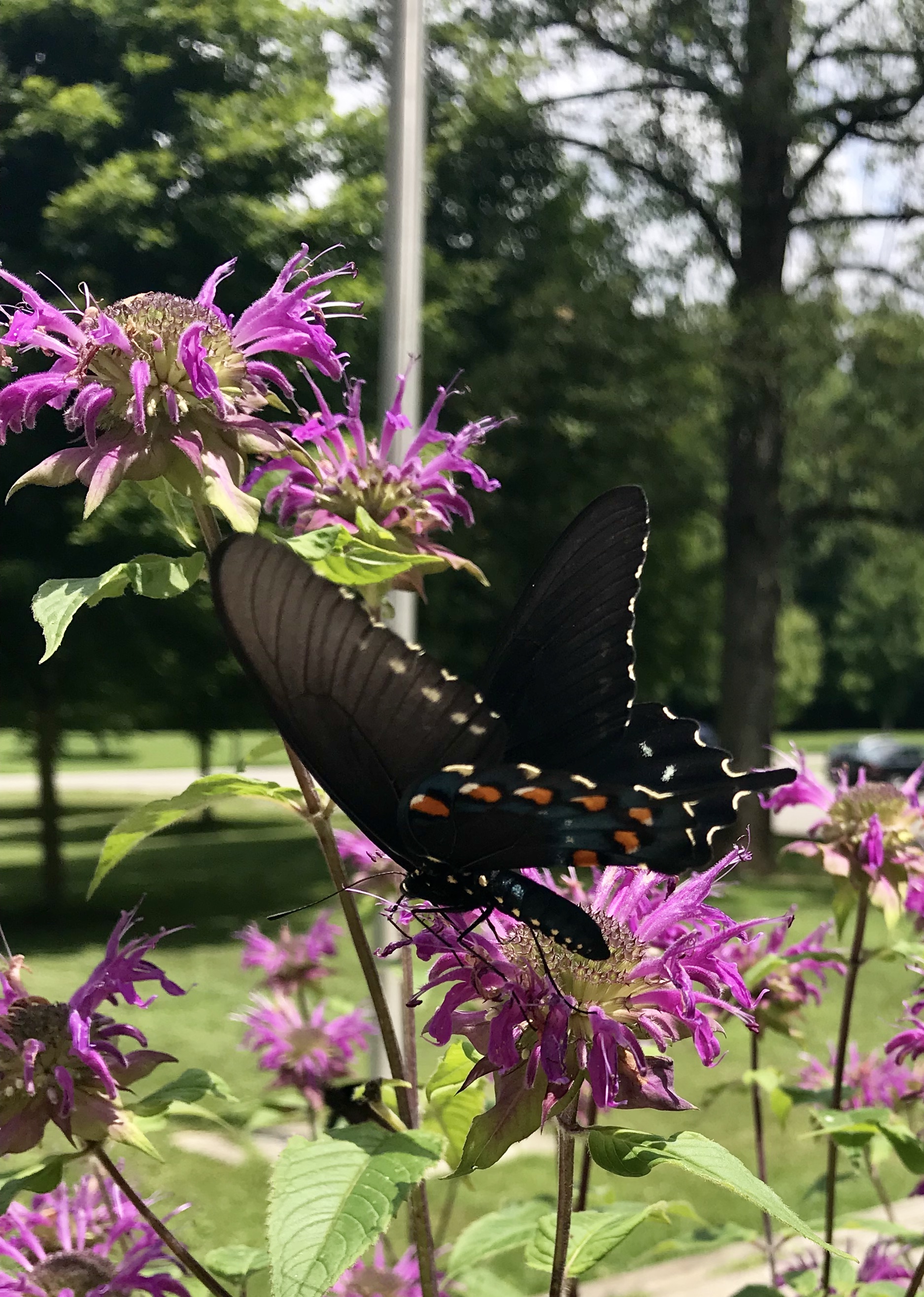
While we're on the subject of butterflies and moths, here are three tiny moths from the shop wall, and last a Hickory Tussock Moth caterpillar.
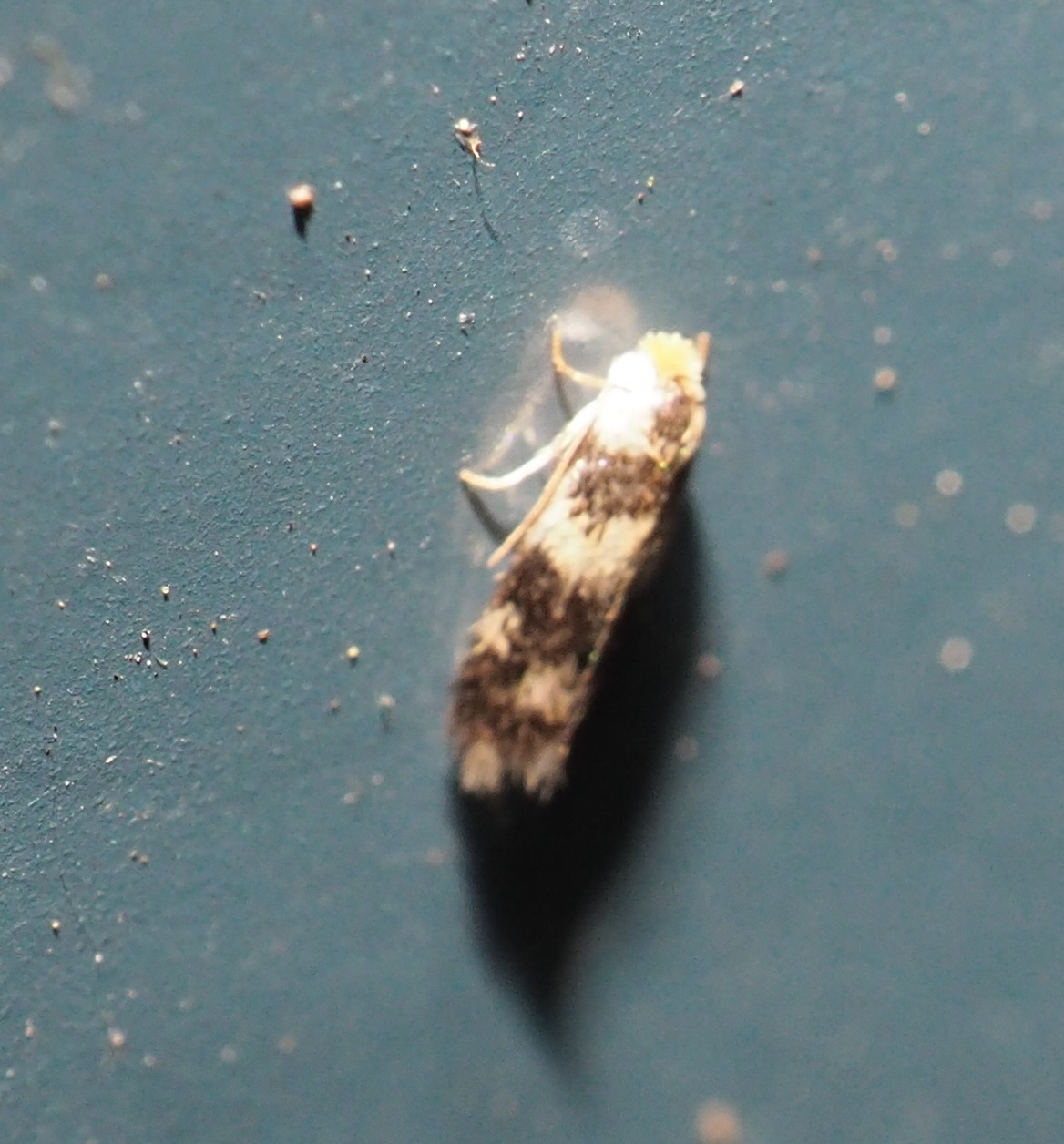
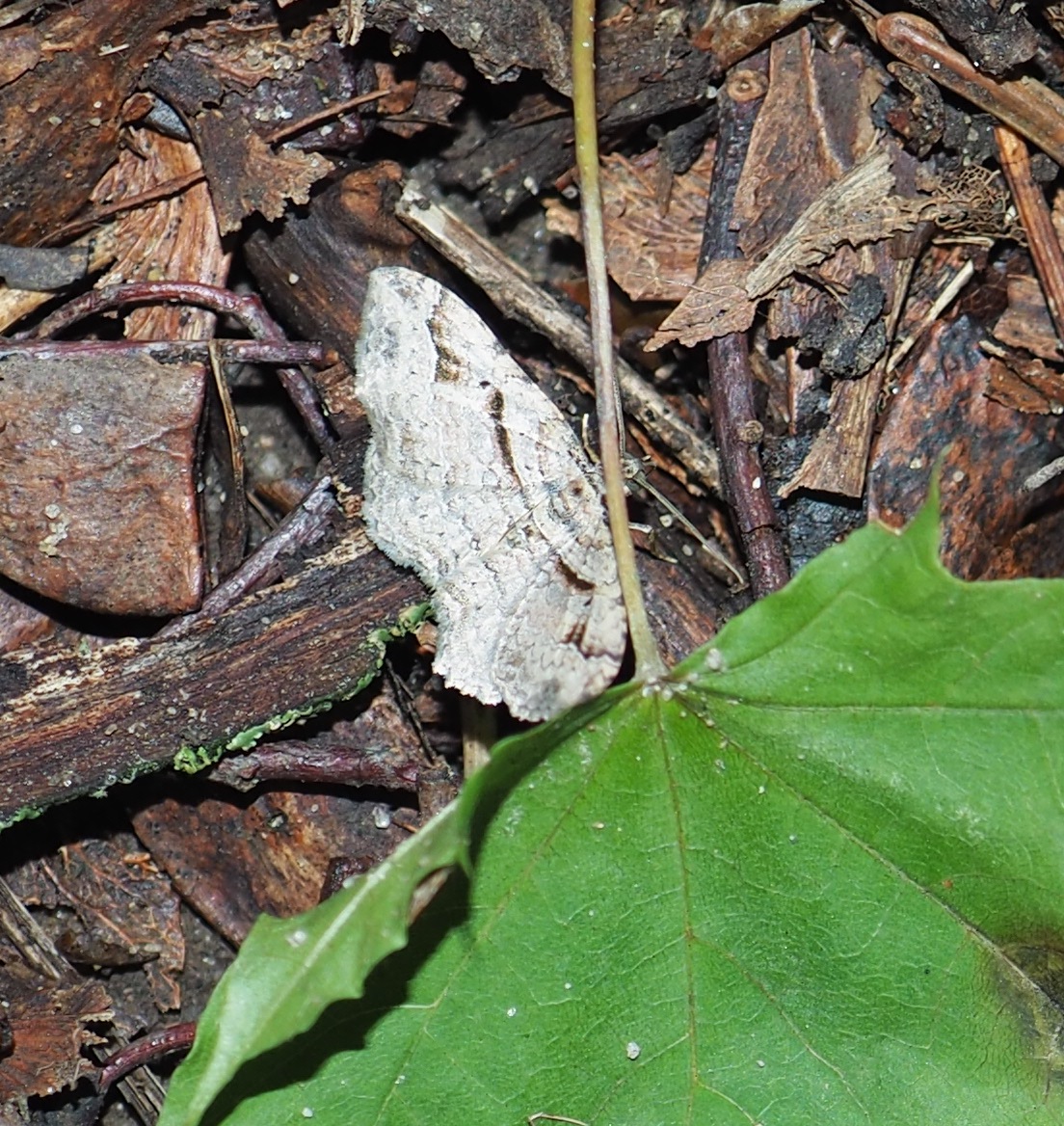
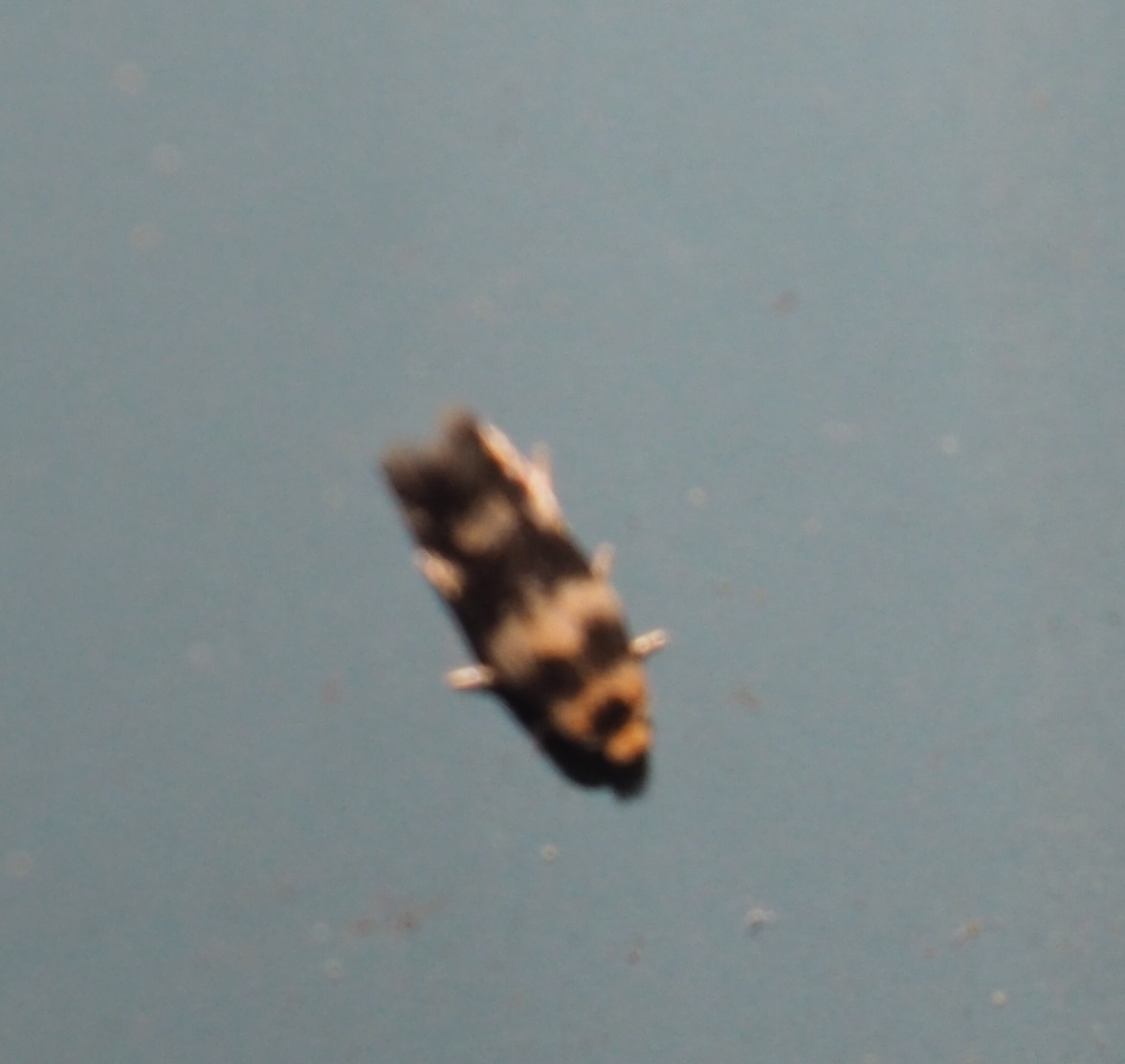
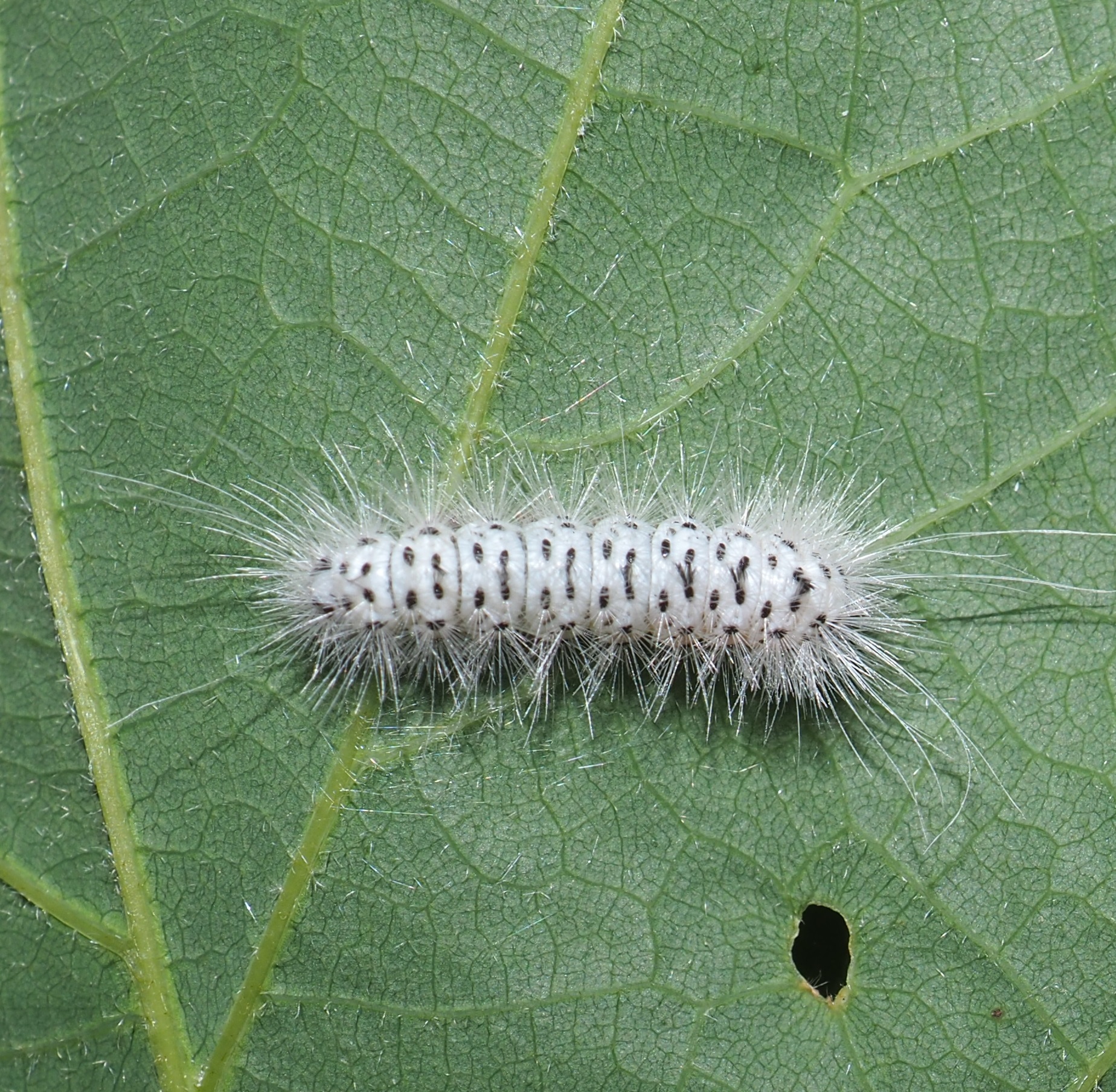
Here is a tiny cricket nymph. Then a new spider, brown and white. Then a Common House Spider (chs). And finally surprise! Another chs, but adult male (they're the ones that turn red.)
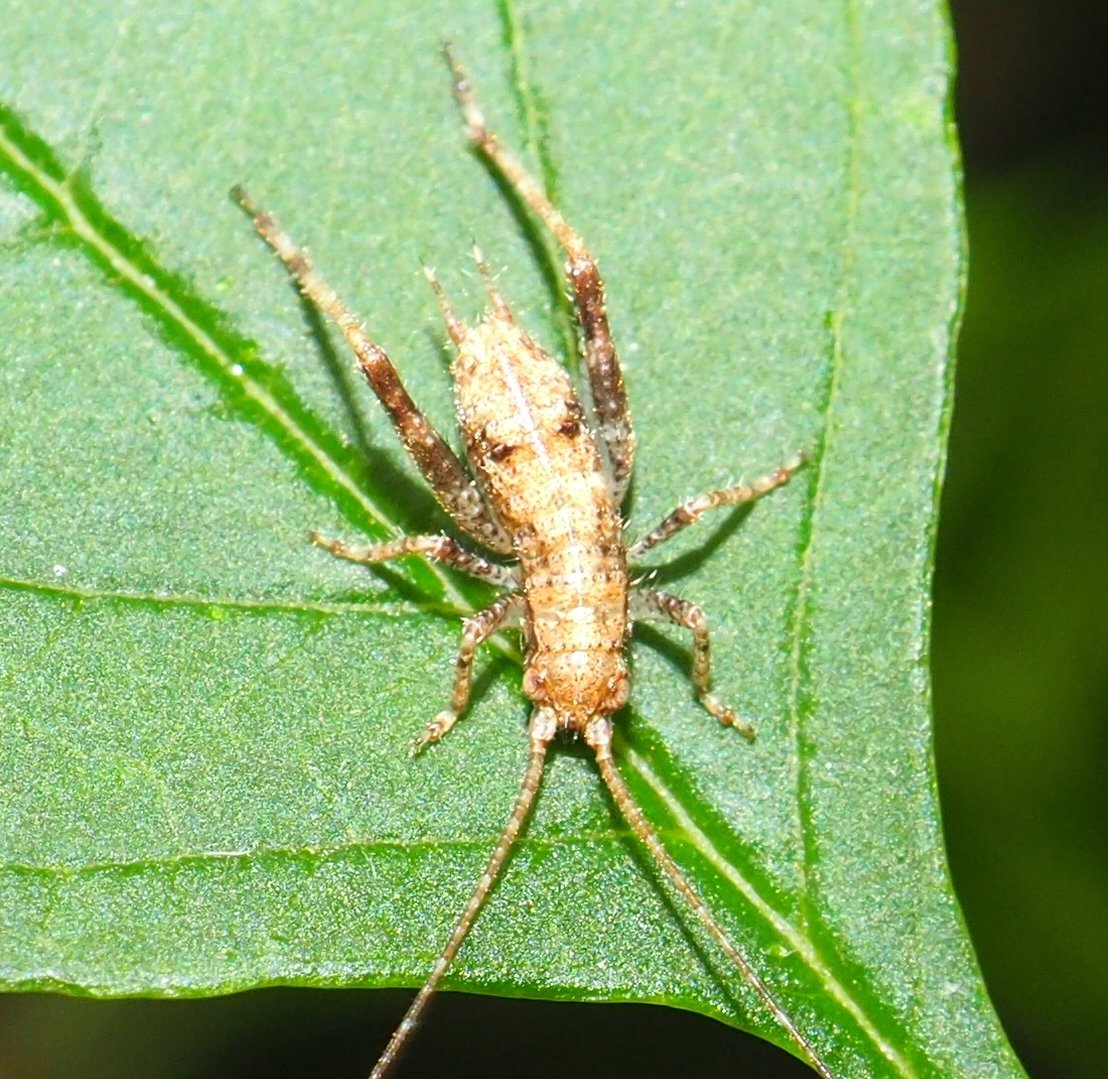
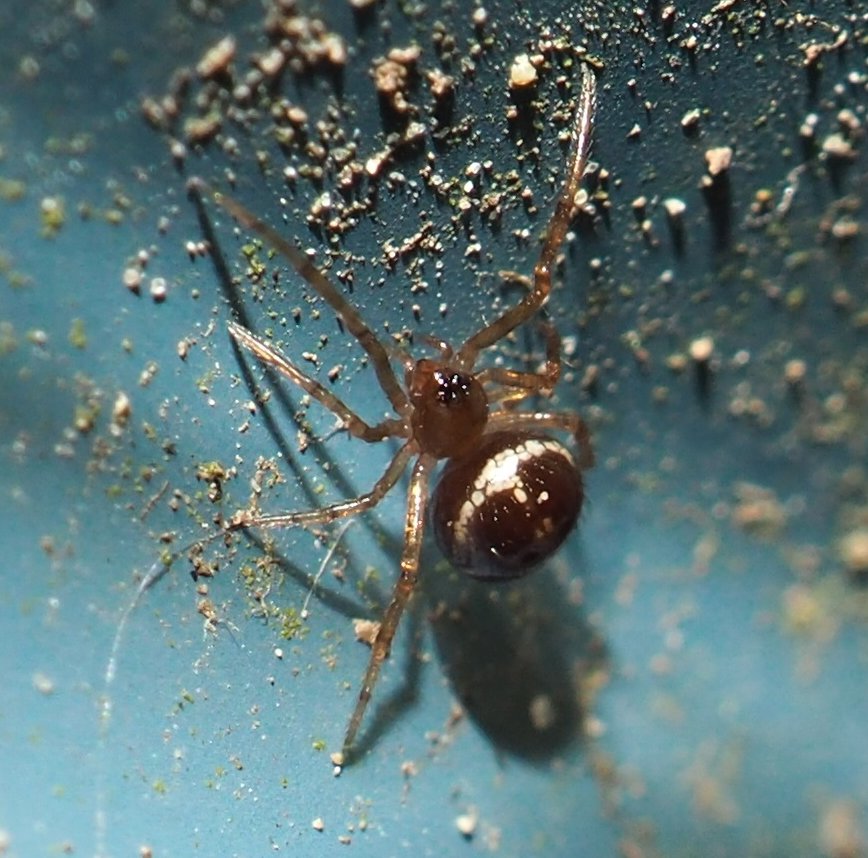
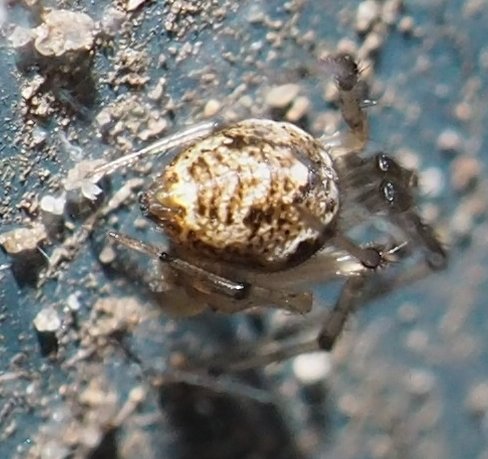
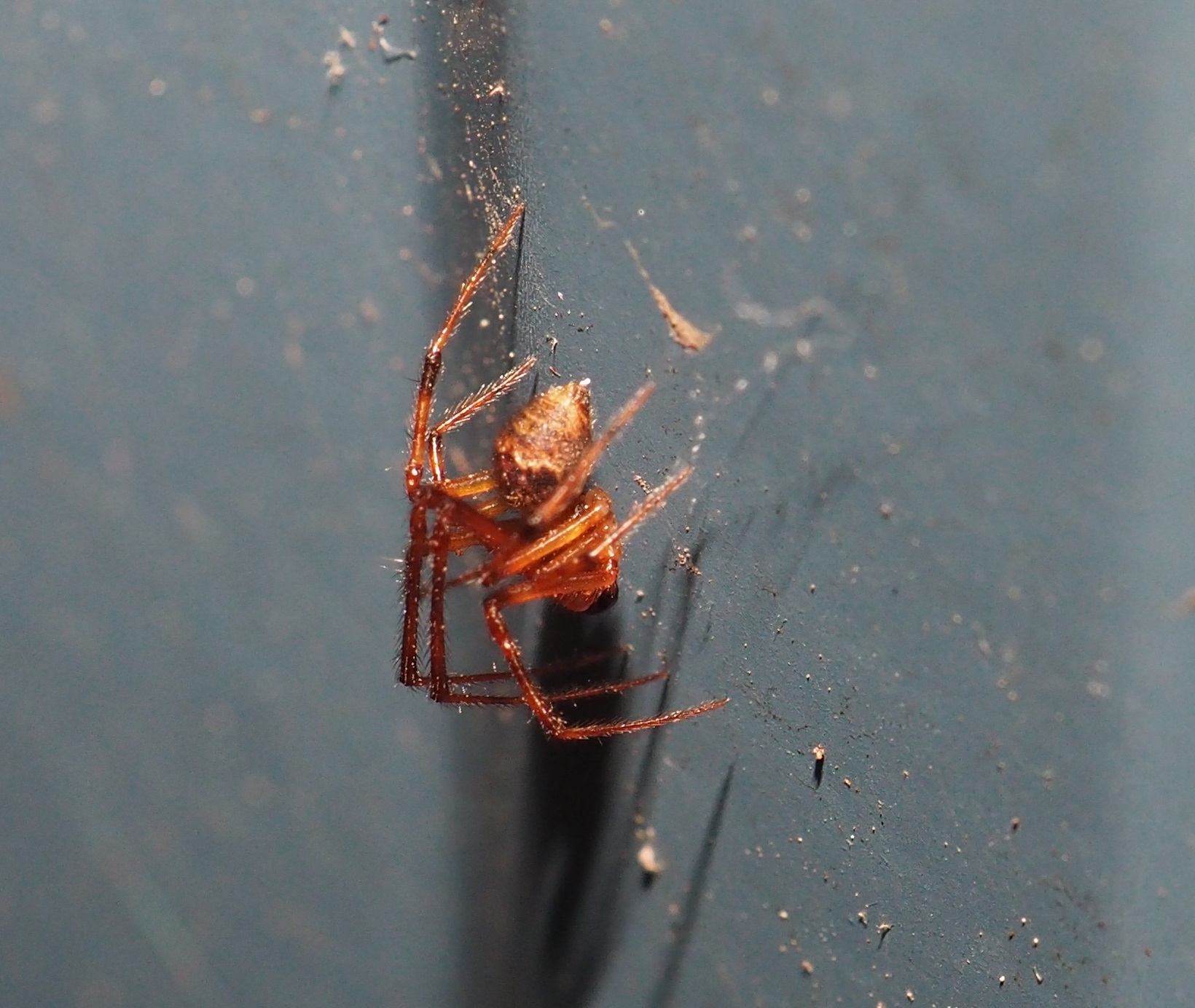
Here's a male of the cobweb spider Enoplagnatha ovata. The second picture shows it with green legs. Then comes a Grass Spider. They make kind of messy webs so that They can run in and out but not most critters. And last, a newish Jumping Spider.
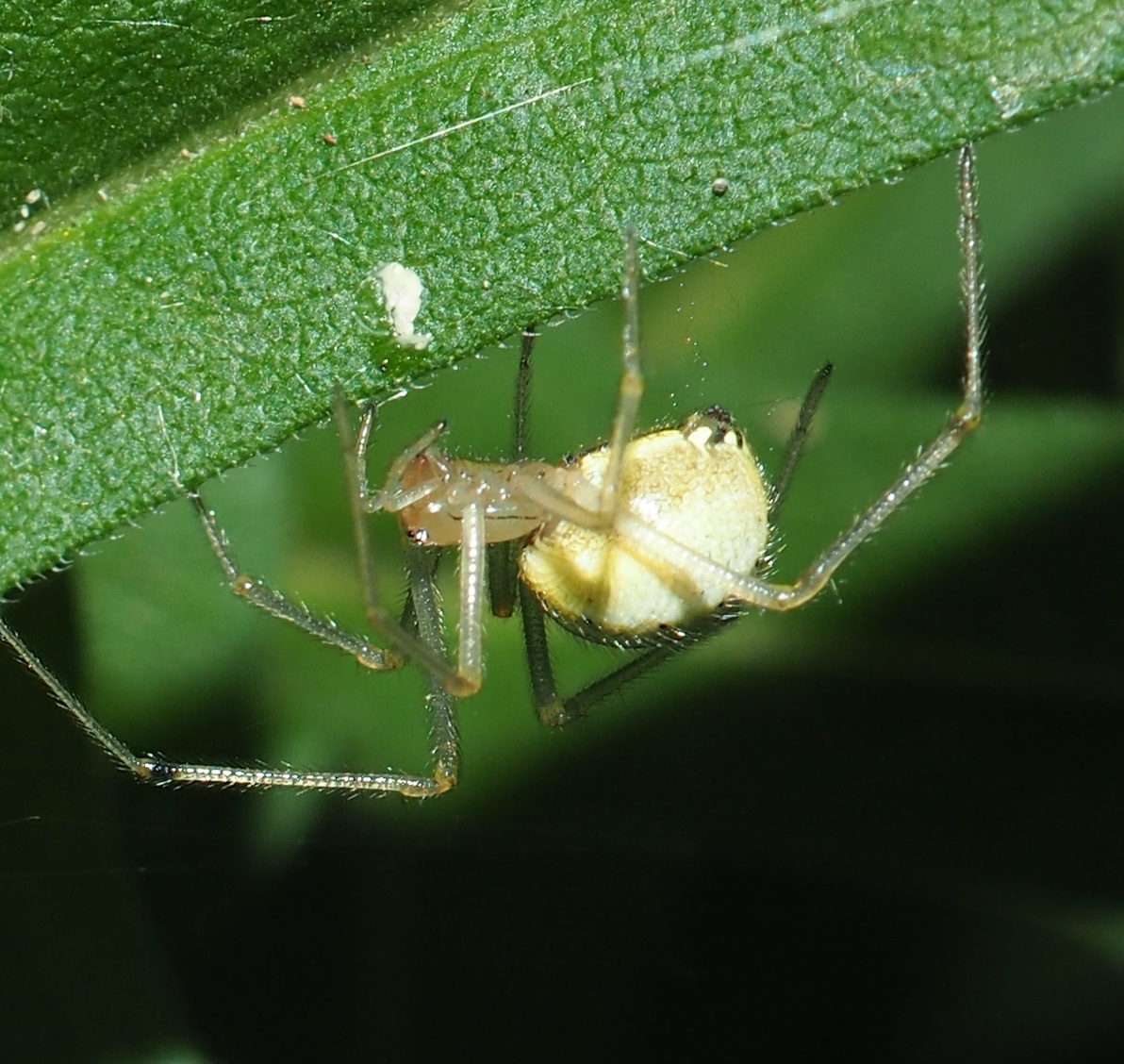
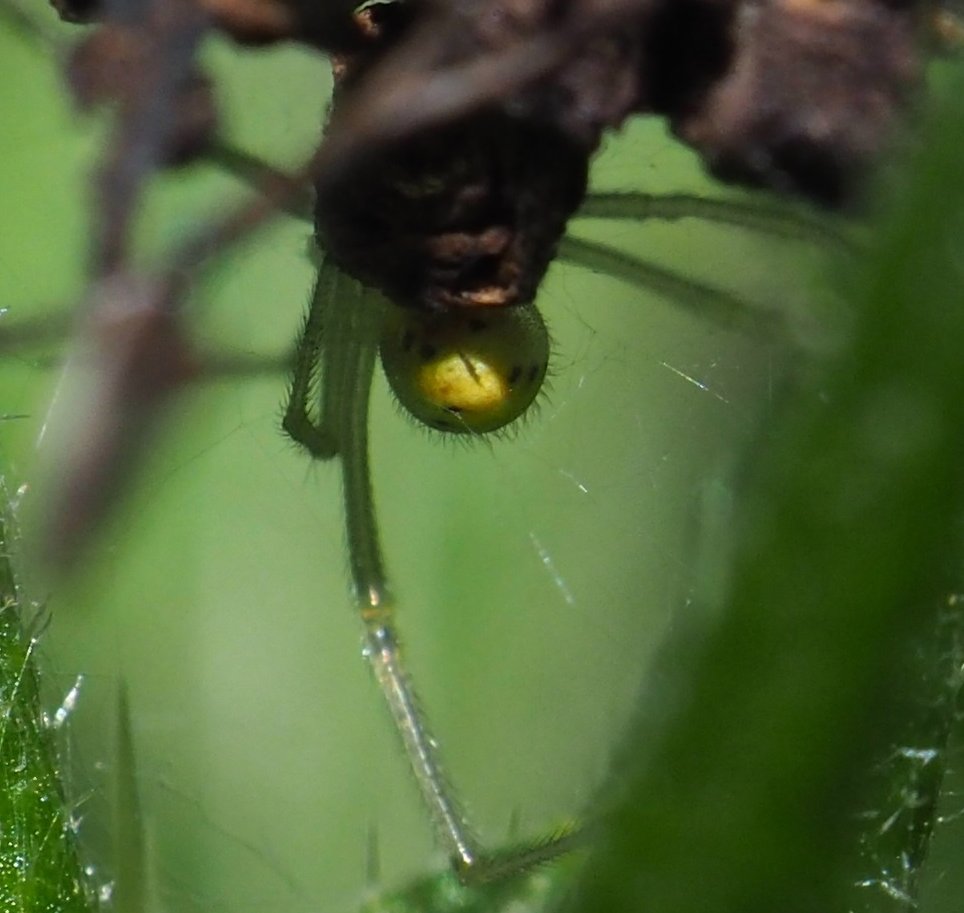
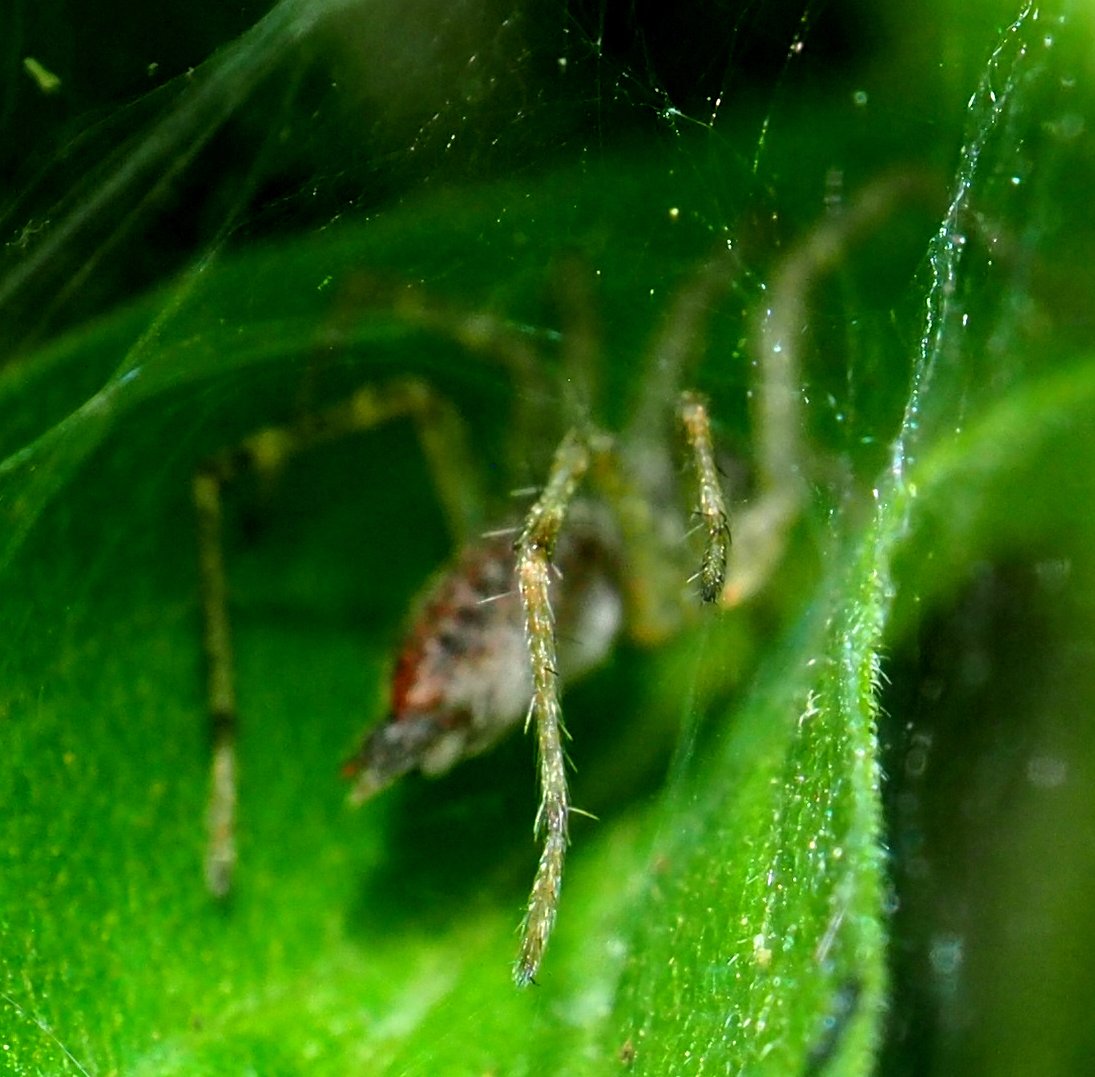
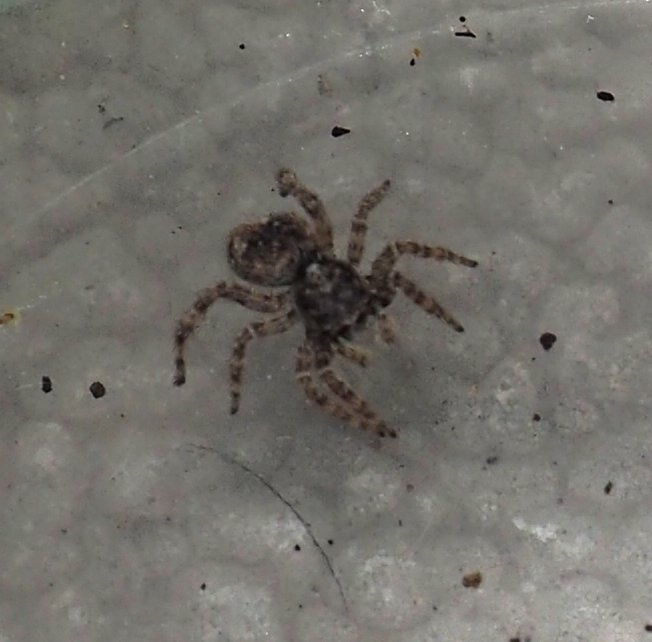
Now here's a Jumping Spider we do know. It's Naphrys pulex. A little spider rests on a leaf.
And a Mystery Spider rests on a Redbud leaf.
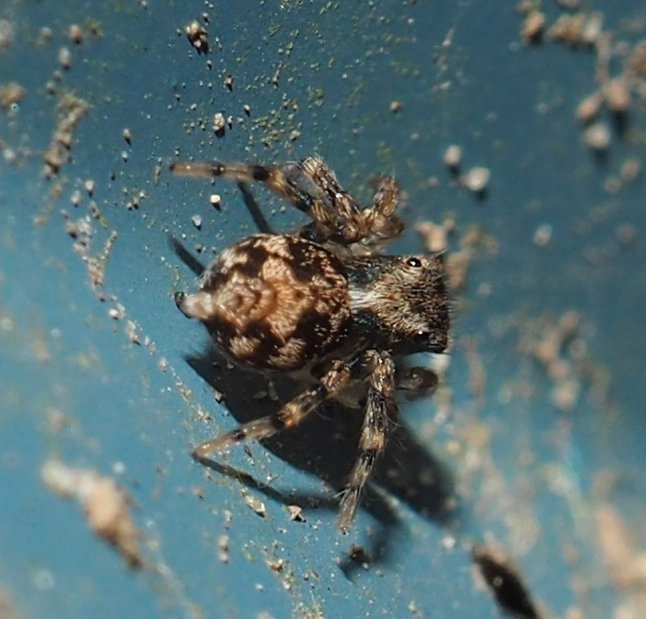
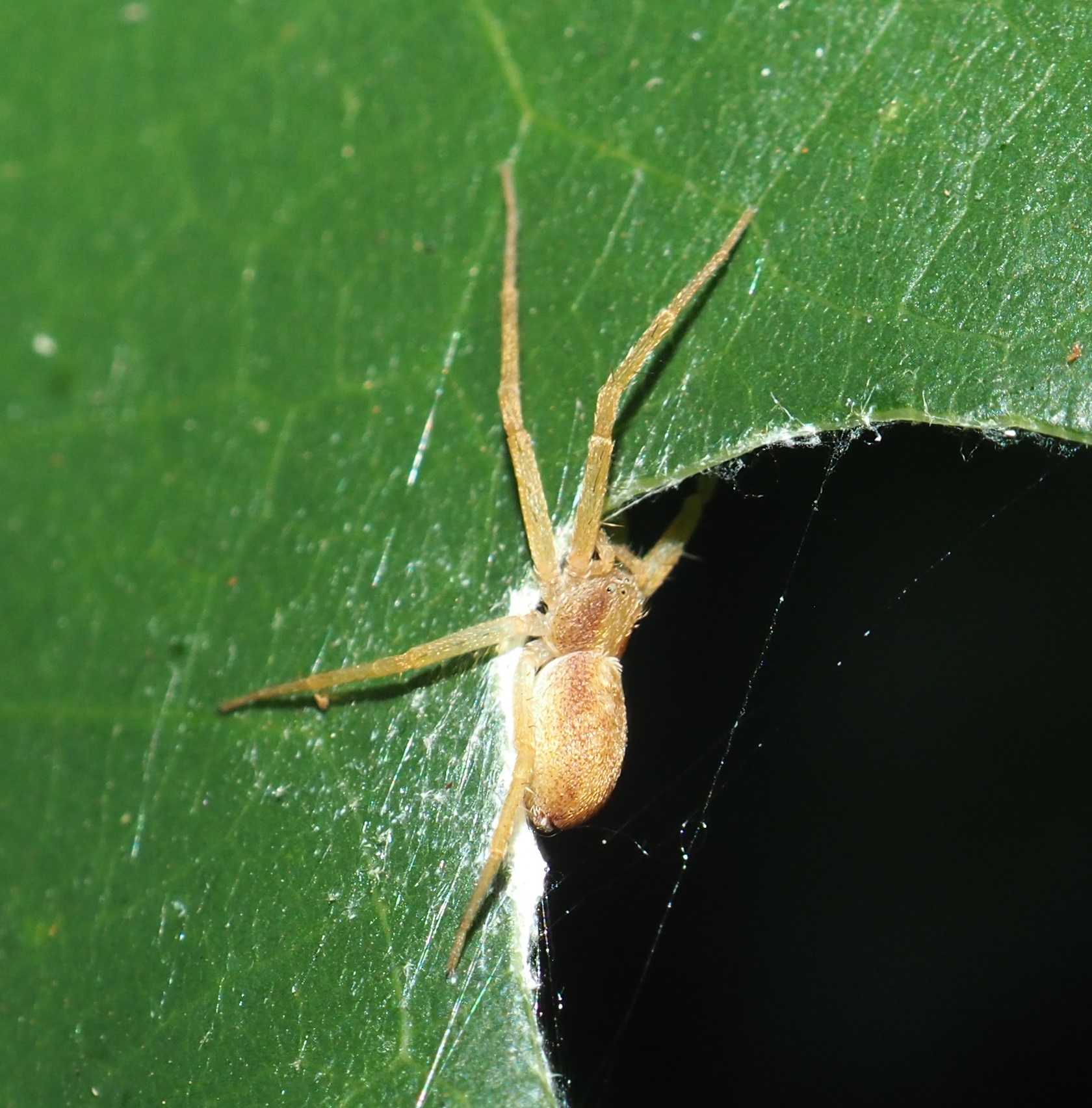
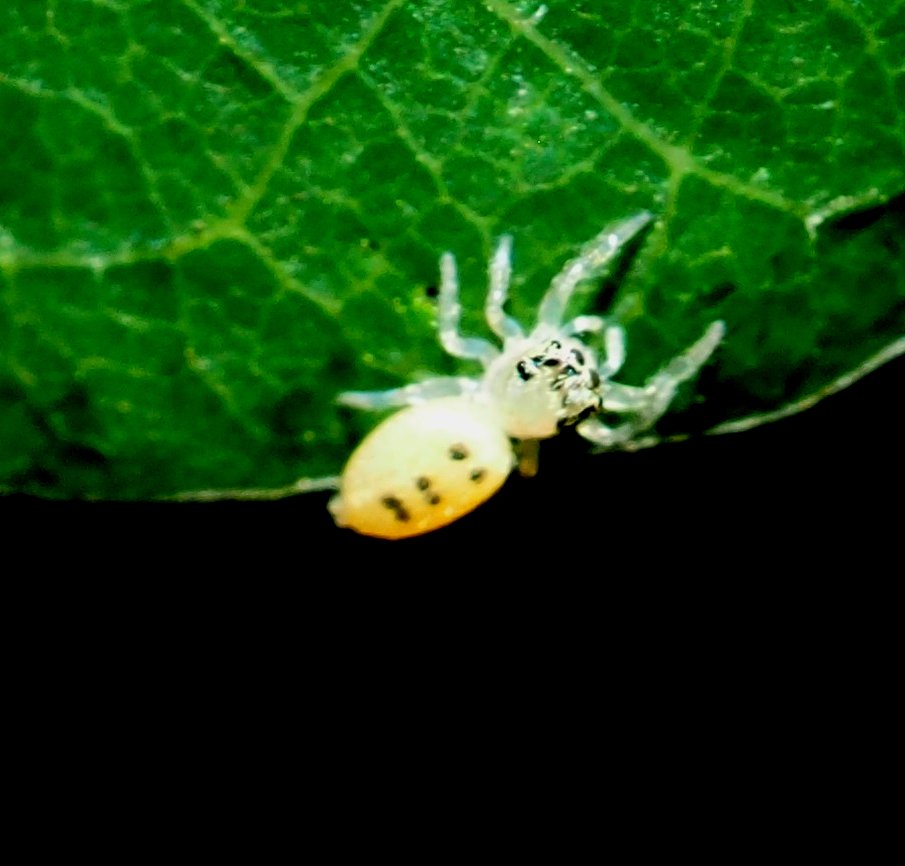
The orchard orbweaver is a long-jawed beauty, Beauty being the operant word. Here are two views of her. Note the variety of her markings. She looks different in many different views.
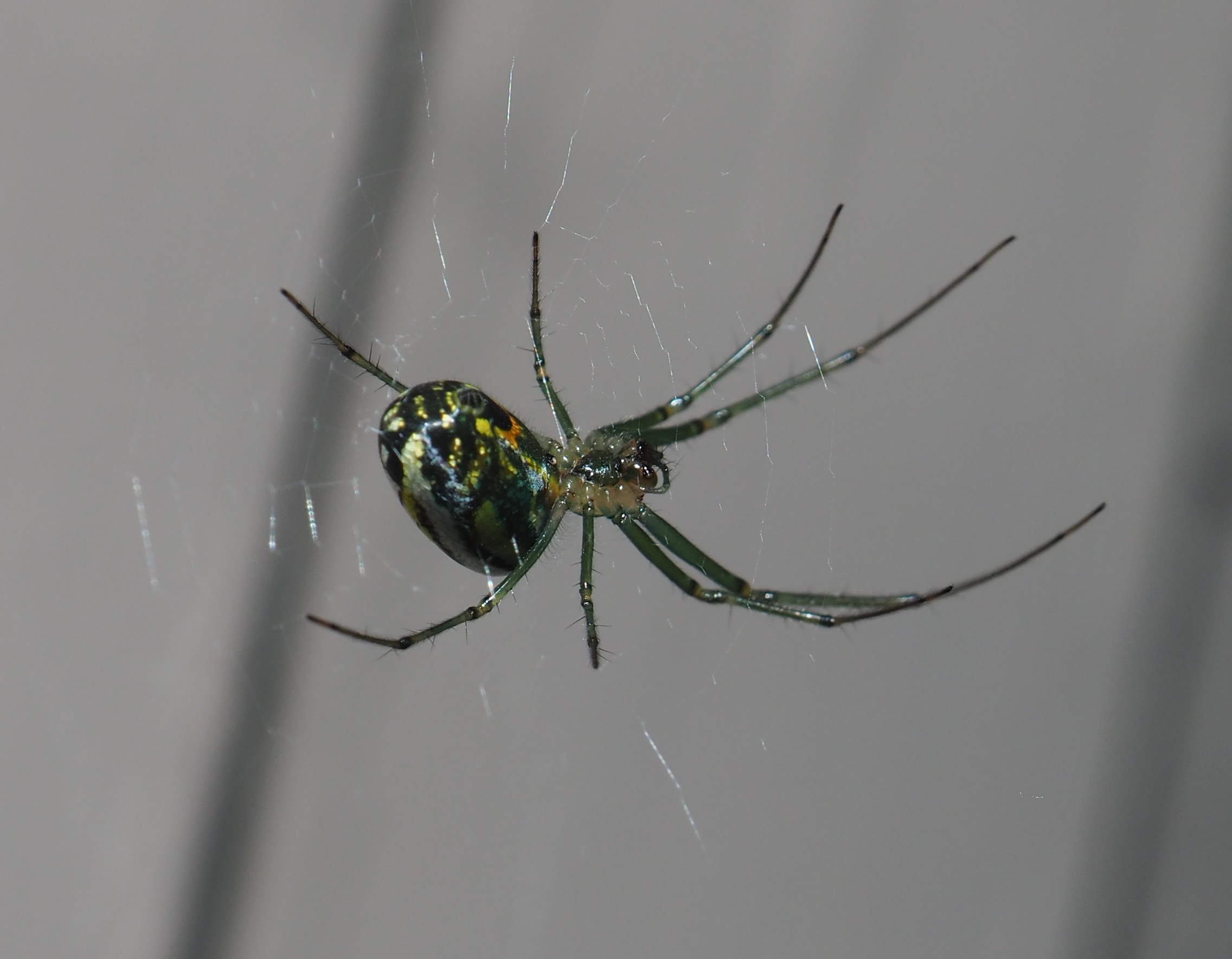
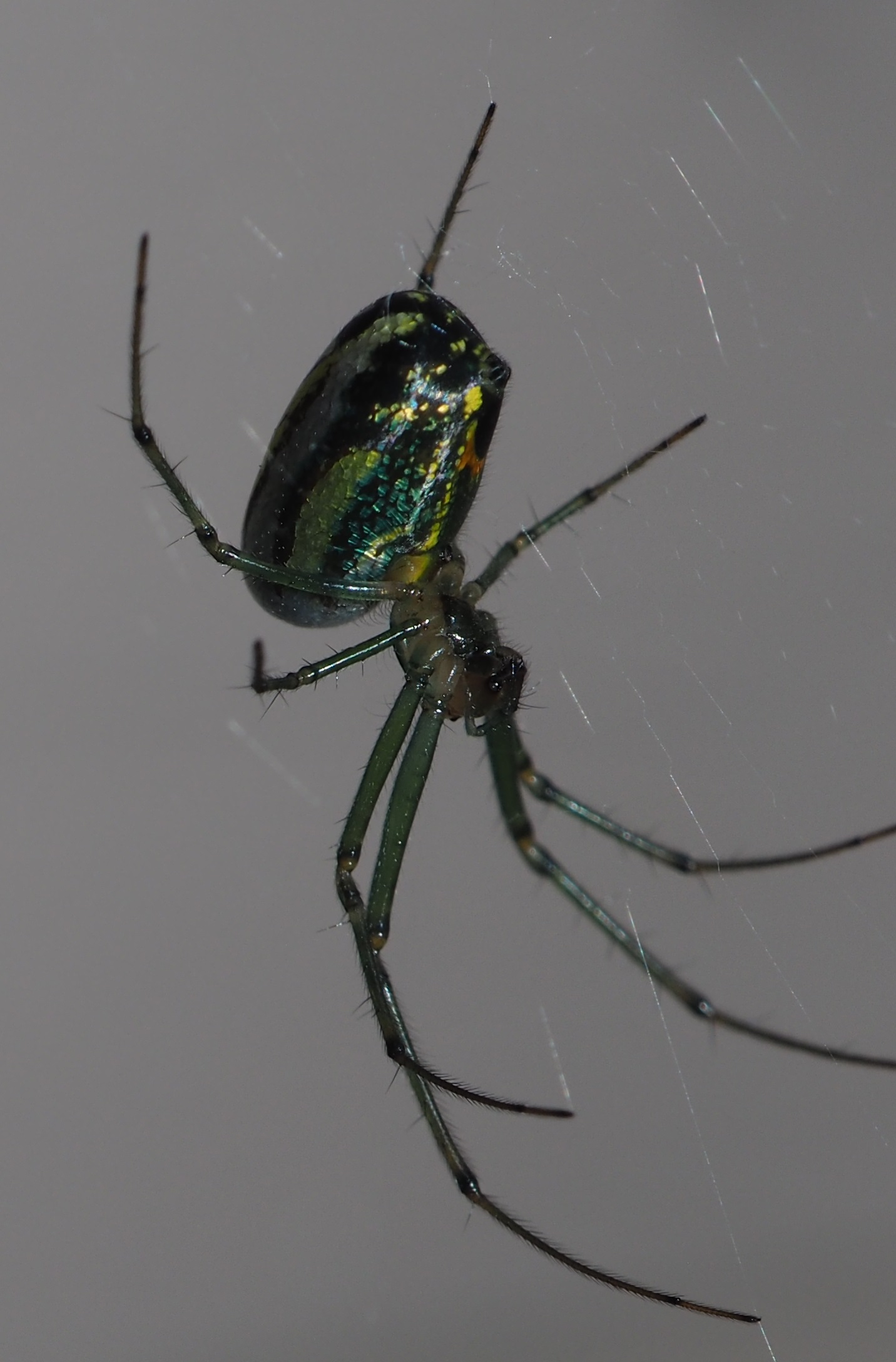
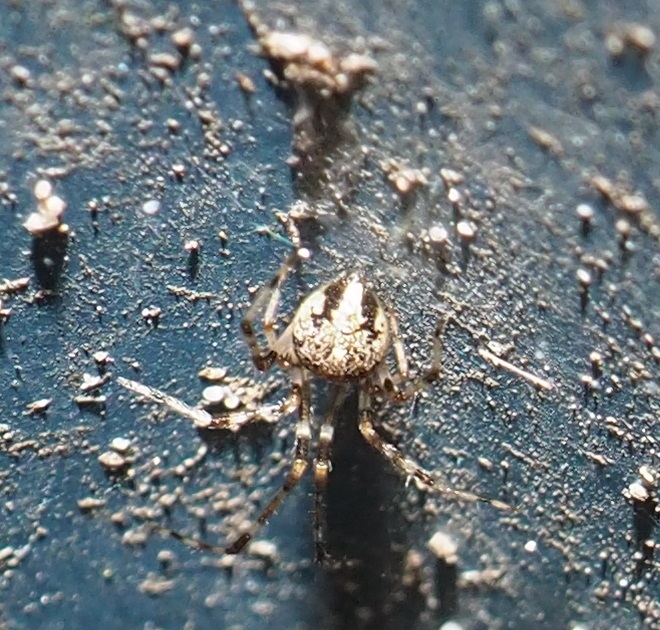
I wasn't very careful about watching the tadpoles thin out and even thought the fish were eating them. But a couple of days ago I almost stepped on this tiny toad (about a half-inch long). They must have been escaping from the pond for a few weeks. I know this one is from this year's batch because in the spring I saw yearlings that quite a bit bigger than this one.
:-) Here is another loner - an ichneumon ovipositing.
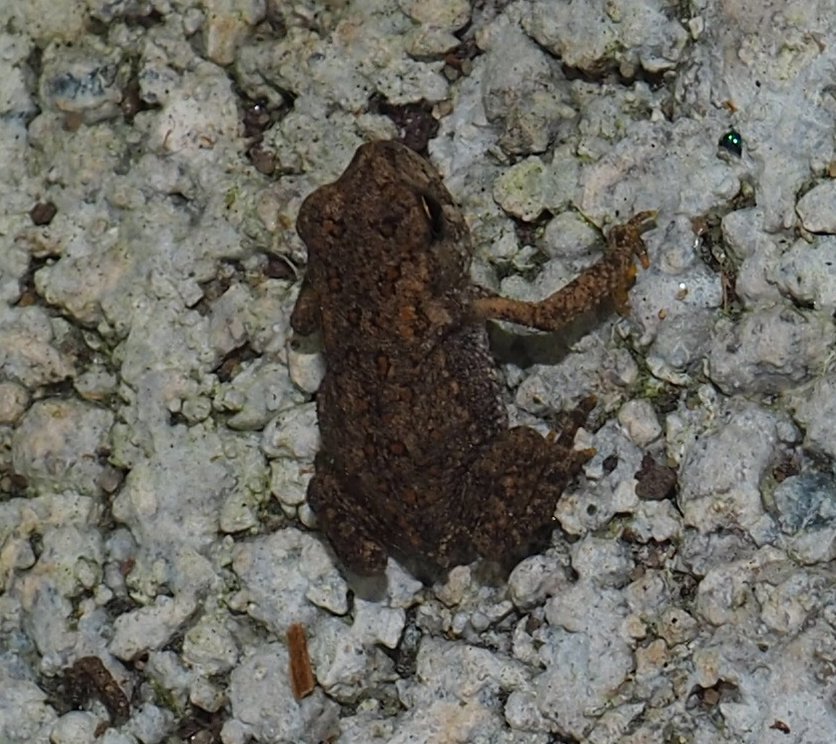
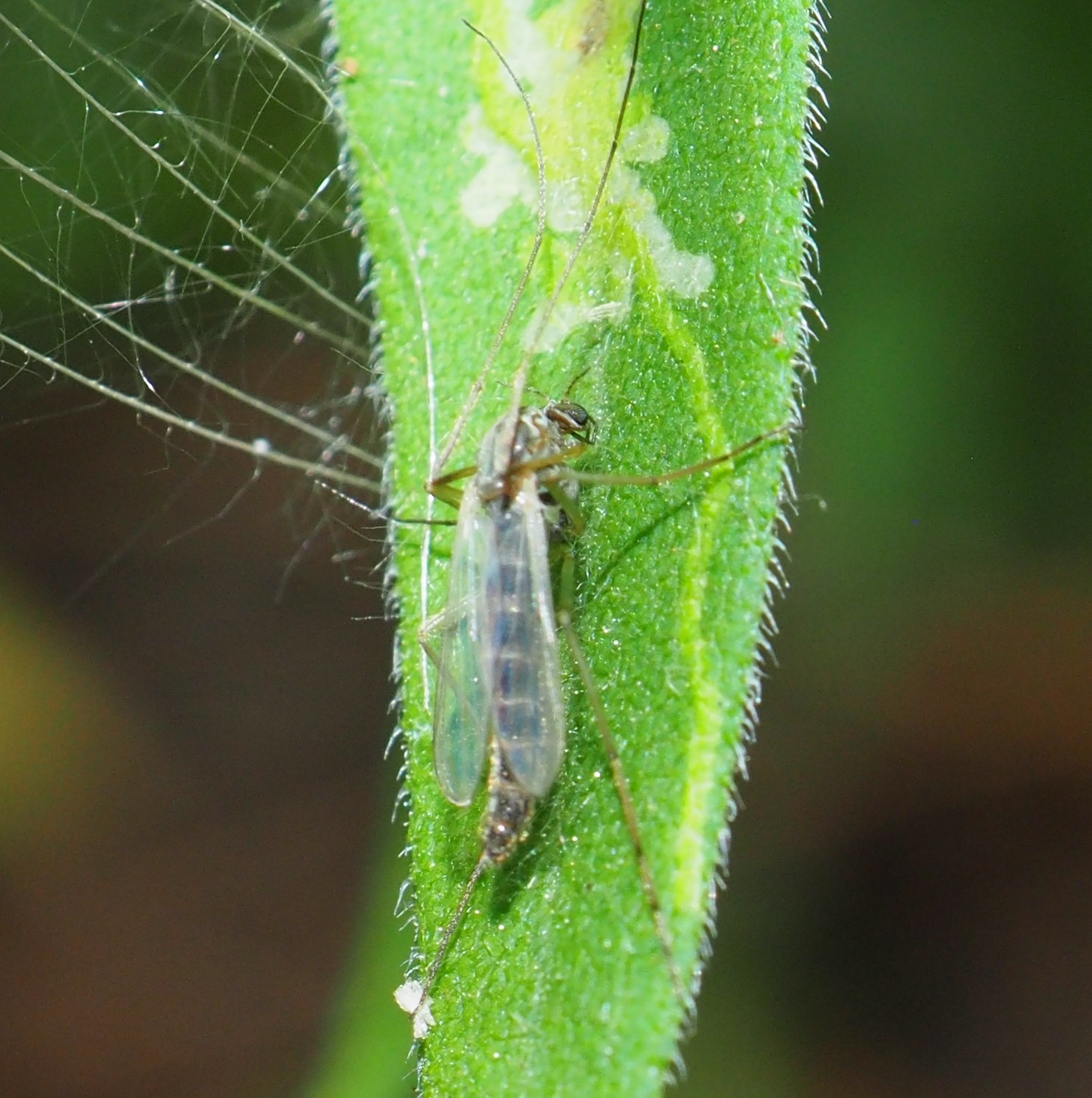
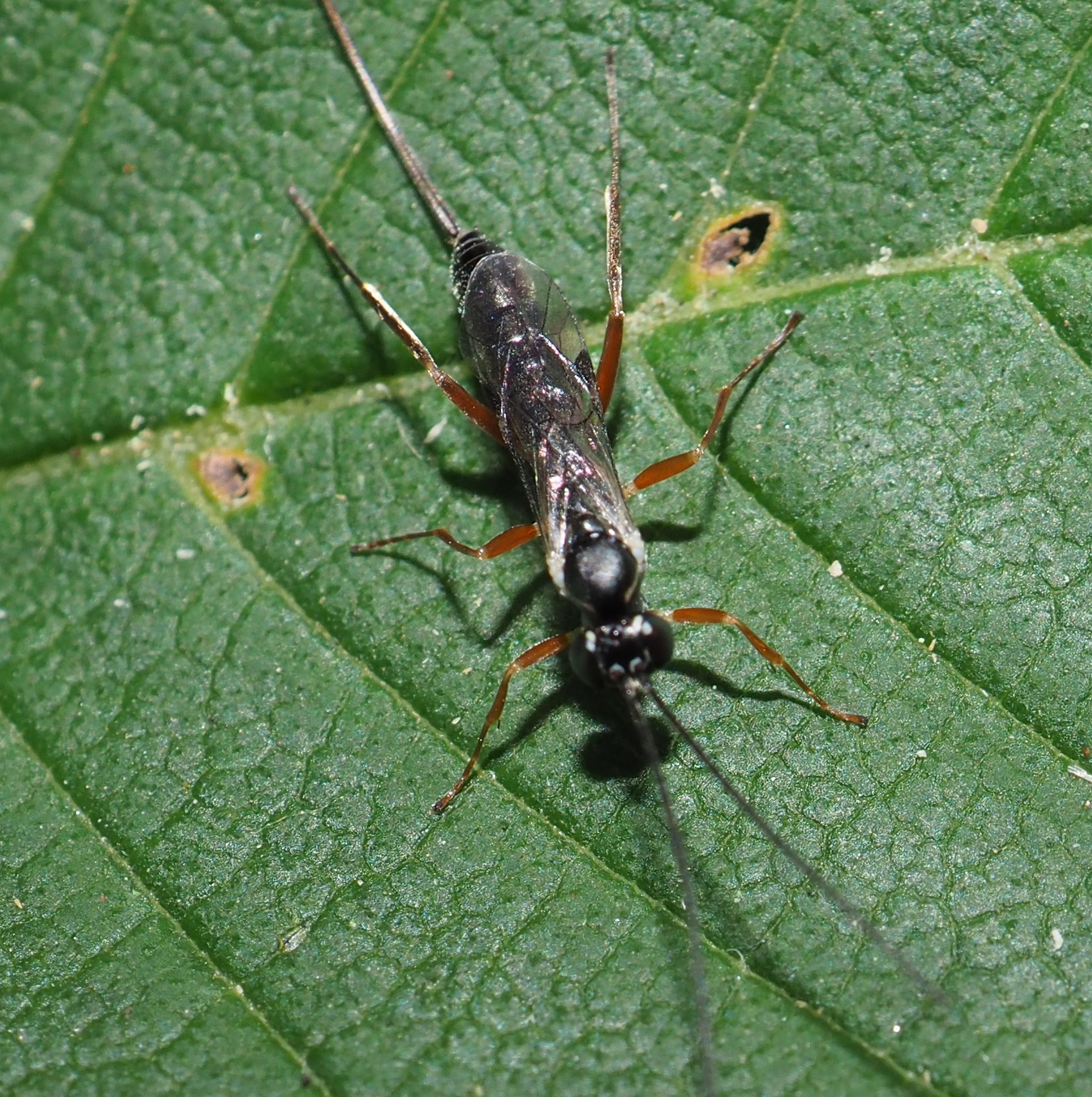
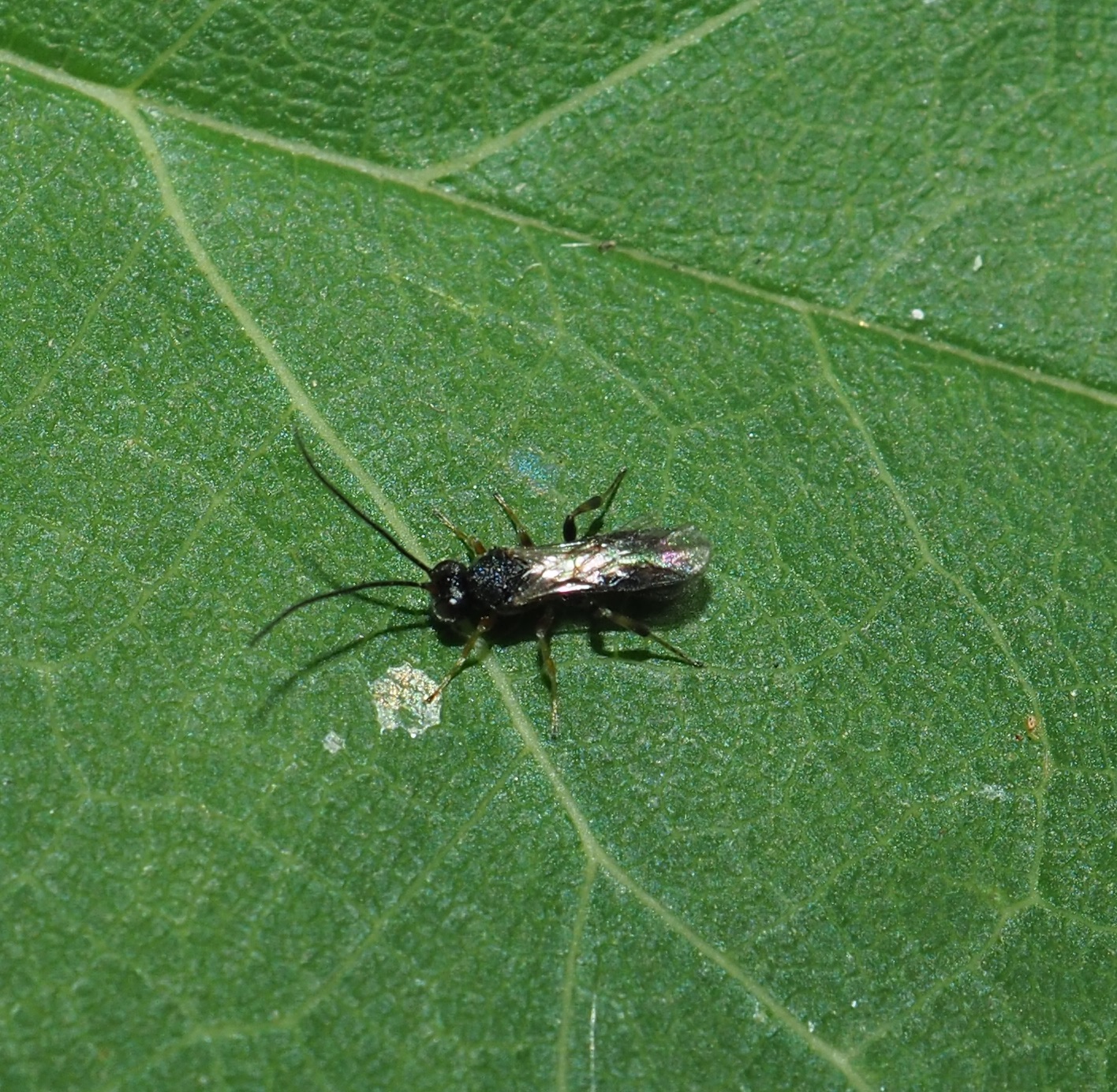
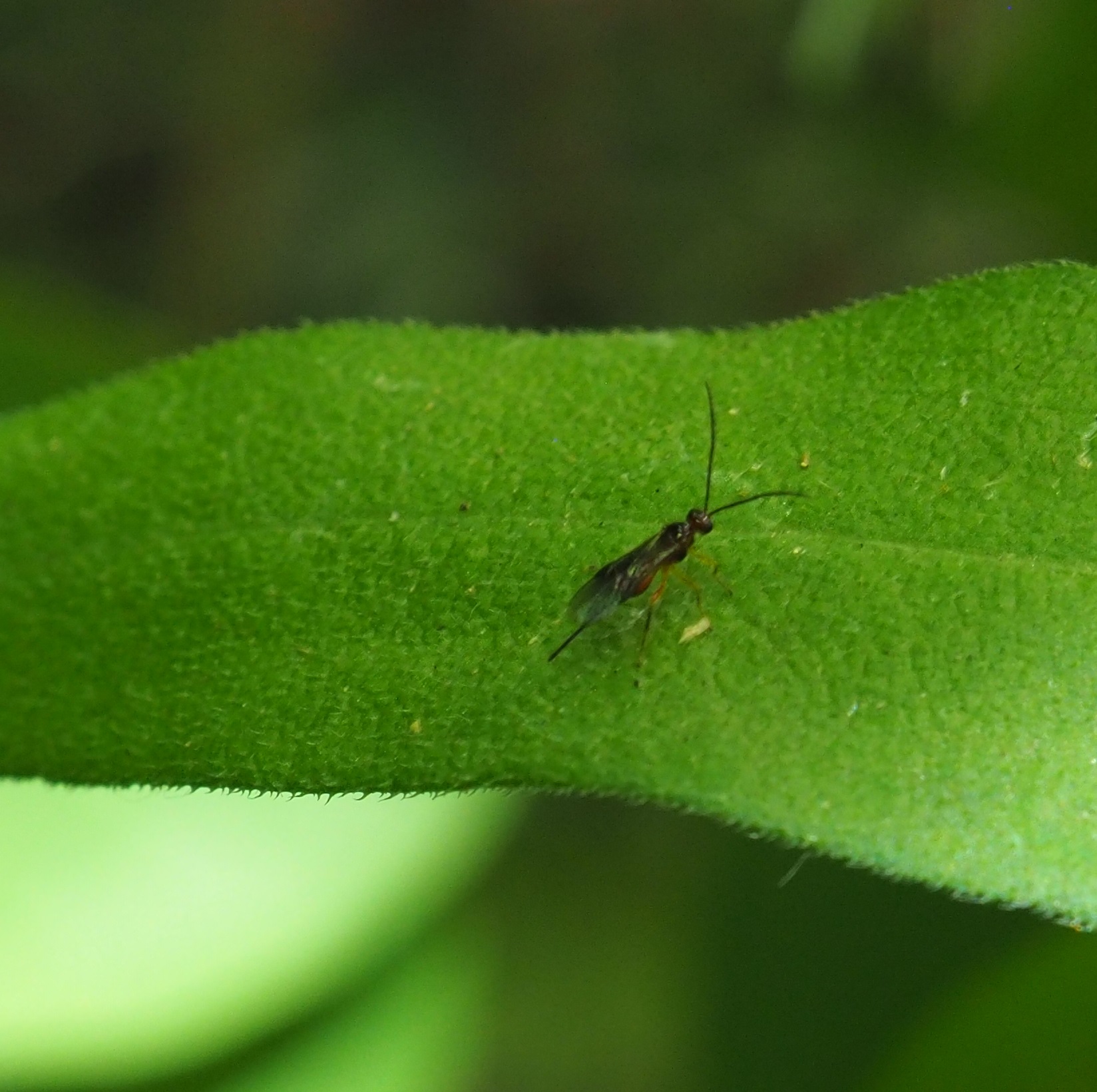
A look at the pond amid all the stress of overheating and a prodigious algae bloom. I'm in the midst of dosing it with lots of barley extract (for the algae) and a pond enhancer (anti-algae) and bacteria (for its microbiota).

Sad news time. I don't know how to tell you this, but Big Bunny died Friday night. She had had two days of eating much less than usual. She didn't even finish her beloved carrots. Friday evening when I gave her her carrot, she started eating it and actually did get some of it into her. I guess at least she had a good last meal, she loved carrots so much. She was quite a lovely companion, especially to the two cats who enjoyed sleeping in her cage with her. We have to remember how very benign and intelligent rabbits are.
A couple of days ago, Fanny, the mother fish that had graced our pond with many many baby fish who are almost grown now - that Fanny, I found her on the side of the pond - apparently a raccoon had seen she was weak and so finished her off. A swarm of bright yellow-green bot flies cleaned up the scene within a day and a half. She will be missed by me and all her fish kids, which was almost every other fish in the pond. Well, she will be missed by me.
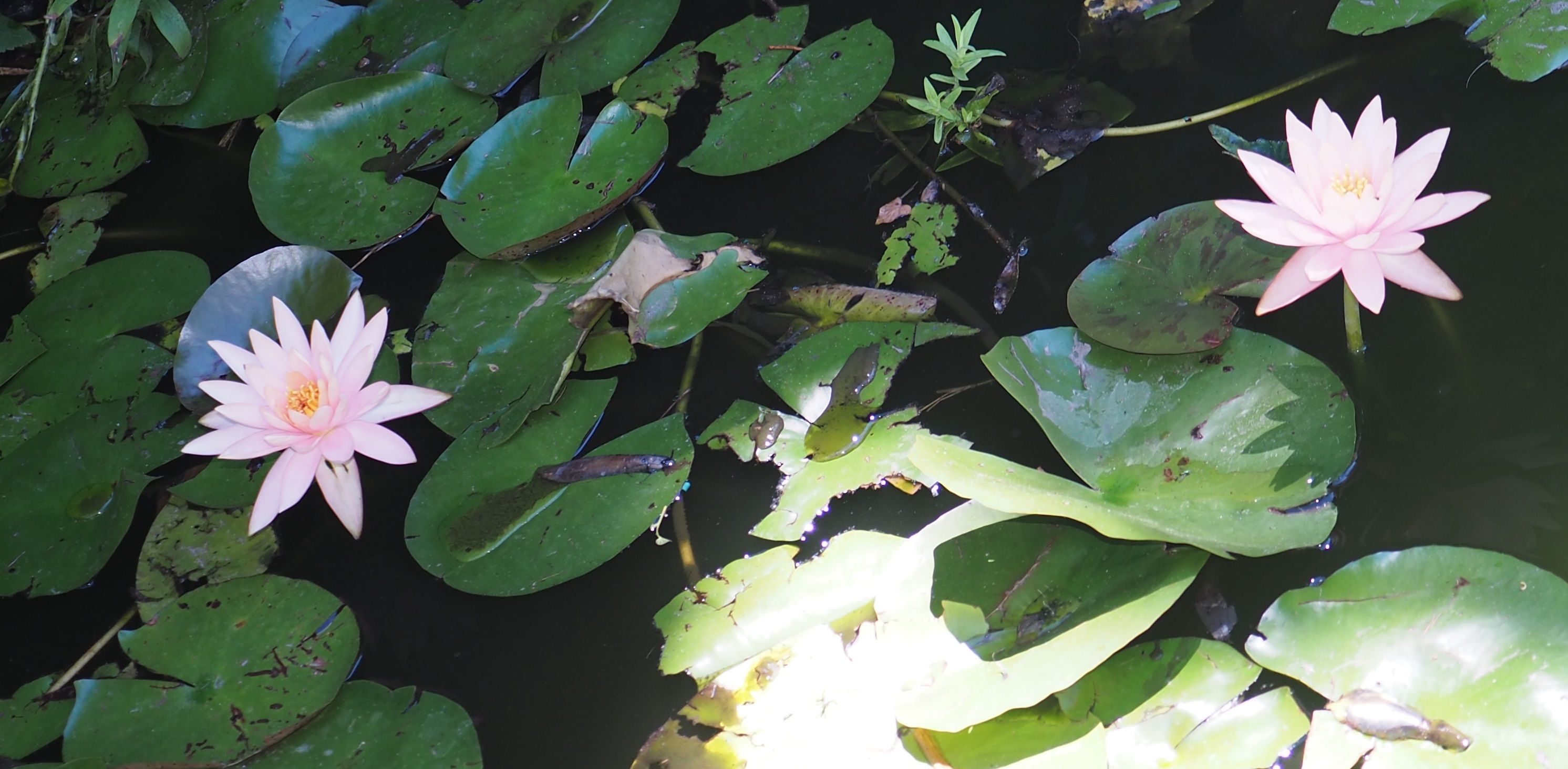
Goodbye for now, friends. If this week is like all the others, it may be another long one!
Love, Martha
Back to July 8, 2018
Forward to July 22, 2018
Back to main menu
copyright Martha O'Kennon 2018
















































































